The post The Countdown to China’s Reunification Has Begun first appeared on China Academy.
]]>
On the 13th of March, Taiwan regional leader Lai Ching-te falsely claimed, “Taiwan is a sovereign and independent democratic country.” In response, Beijing said it would take decisive measures if necessary.
In American political circles, Zbigniew Brzezinski’s book The Grand Chessboard has long been regarded as a strategic bible. The book argues that on the Eurasian chessboard, only significant powers like China and Russia are considered equals to the United States. At the same time, the rest of the countries are either passive observers or pawns—Taiwan island, which is not even a sovereign nation, clearly falls into the latter category.
Chinese strategist Professor Wang Xiangshui once pointed out that pawns can escape their fate of being manipulated either through strength or intelligence. However, Lai Ching-te’s stupidity and arrogance are turning Taiwan island from a pawn meant to contain China into a burden to the United States—a losing piece that will be discarded once it is drained of value.
The arrogance of Taiwan’s separatist figures has always been fueled by the belief that “The US will go to war with China over Taiwan island” and “the U.S. military can definitely defeat the People’s Liberation Army.” However, by 2025, this is nothing more than a double illusion.
On the one hand, the U.S. no longer has the capability to separate Taiwan from China.
For the U.S. Navy, which operates around aircraft carrier strike groups, the premise of any action is securing air superiority. However, by 2025, China’s Air Force has firmly established air dominance in the Asia-Pacific region through three key factors.

First, China has a generation lead over the U.S. in stealth fighter and air-to-air missiles. Second, the 2016 South China Sea standoff proved that China’s reconnaissance drones and satellites can track the location of U.S. aircraft carriers continuously. Most importantly, in 2020 and 2024, China demonstrated two types of long-range anti-ship missiles that can be launched from strategic bombers.
The International Institute for Strategic Studies (IISS) believes these missiles are an air-launched variant of the DF-21 missile. The DF-21 has a range of 1,700 kilometers when launched from the ground, and the War Zone magazine suggests that its range could extend to around 6,000 kilometers when launched from the air.

To put it into perspective, the distance from Beijing to Hawaii is only about 8,100 kilometers. This means China’s bombers, by hovering over their own territory, are Able to prevent US aircraft carriers from entering most of the Western Pacific.
Additionally, the DF-21 is a ballistic missile that reaches speeds of up to 10 Mach in its terminal phase. U.S. defence systems’ track record in Ukraine shows they cannot even intercept Russian Kinzhal missiles travelling at 5.9 Mach.
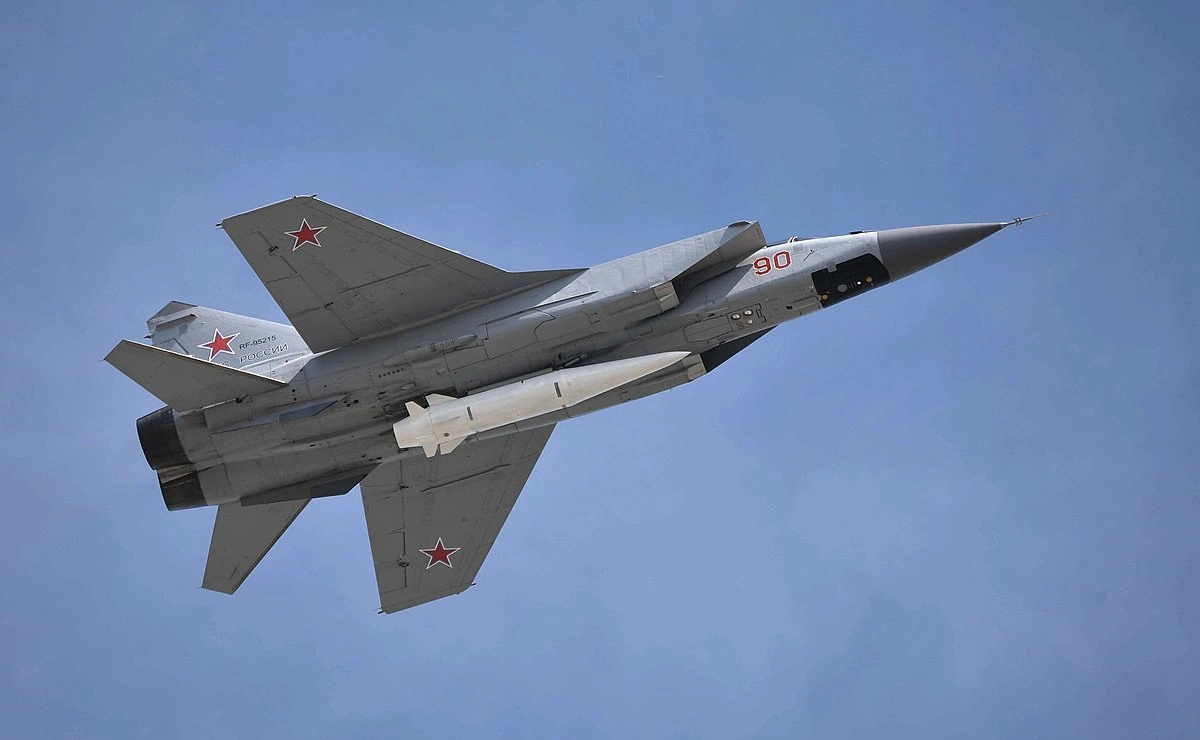 According to the Russian Defense Ministry, the Kinzhal hypersonic missile completely destroyed five launchers and a multifunctional radar station of the US-made Patriot air defense system in 2023
According to the Russian Defense Ministry, the Kinzhal hypersonic missile completely destroyed five launchers and a multifunctional radar station of the US-made Patriot air defense system in 2023
In fact, faced with China’s air superiority, the U.S. military has no desire to engage and is only focused on survival. In October 2024, the Wall Street Journal revealed that the Pentagon had shifted its strategic focus in the Asia-Pacific to “Scatter and Survive.” On January 30, Stars and Stripes reported that U.S. military pilots stationed in Guam were being evacuated into the jungle and were being trained on how to survive without supplies. Sam Roggeveen, director of the international security programme at Australia’s Lowy Institute, pointed out that this signals the U.S. military no longer aims to win a war with China, with survival now being the only remaining strategic objective.
Ukraine has demonstrated over the past three years that the U.S. military dares not directly face an adversary of the same weight class. Given the latest moves of the U.S. military, Lai Ching-te, living on a small island, is destined to be even more isolated and unsupported than Zelensky.
On the other hand, Taiwan island has now lost its strategic value in the eyes of the United States.
Taiwan Island once held two key strategic values for the U.S. One was its role as a critical node in the First Island Chain, providing fleet support in times of conflict. The other was its semiconductor industry, particularly Taiwan Semiconductor Manufacturing Company Limited (TSMC), which occupied an essential position in the global supply chain, even leading some separatists to believe that China would hesitate to reunify Taiwan by force because of the economic damage it would inflict on chip production. However, these two strategic advantages have now significantly diminished or even disappeared.
First, with advances in marine propulsion systems, warships’ operational ranges are increasingly independent of supply chains. While China lacks military bases in the Pacific, its conventionally powered destroyers have conducted live-fire exercises and circumnavigated Australia in the South Pacific. As more navies move toward nuclear propulsion, the importance of forward bases will only decrease.
Second, while separatist figures in Taiwan regard TSMC as their shield, TSMC itself wants to distance itself from them. In 2020, TSMC began setting up factories in the U.S., Japan, and Germany, relocating production capacity. Due to Trump’s threat of imposing additional tariffs on chips produced in Taiwan, TSMC moved its most advanced production lines to Arizona. Recently, TSMC invested $100 billion to expand its U.S. factories, sparking panic in Taiwan.
 The TSMC facility in Phoenix, in 2023.
The TSMC facility in Phoenix, in 2023.
This illustrates that Taiwan’s strategic value to the U.S. is rapidly depreciating, while the risks of intervening in the Taiwan Strait are sharply increasing. For businessman-turned-president Donald Trump, this is a no-brainer. On February 26, in his first cabinet meeting after returning to the White House, Trump explicitly stated that the claim “China cannot reunify Taiwan island as long as I am president” was a rumor, and he expressed a preference for improving relations with Beijing while eagerly anticipating increased Chinese investments in the U.S.
For China, there is nothing to be grateful for Trump’s remarks, because as early as 1979 when the US signed the “Joint Communiqué on the Establishment of Diplomatic Relations”, Washington admitted that there is only one China in the world and Taiwan is a part of China.
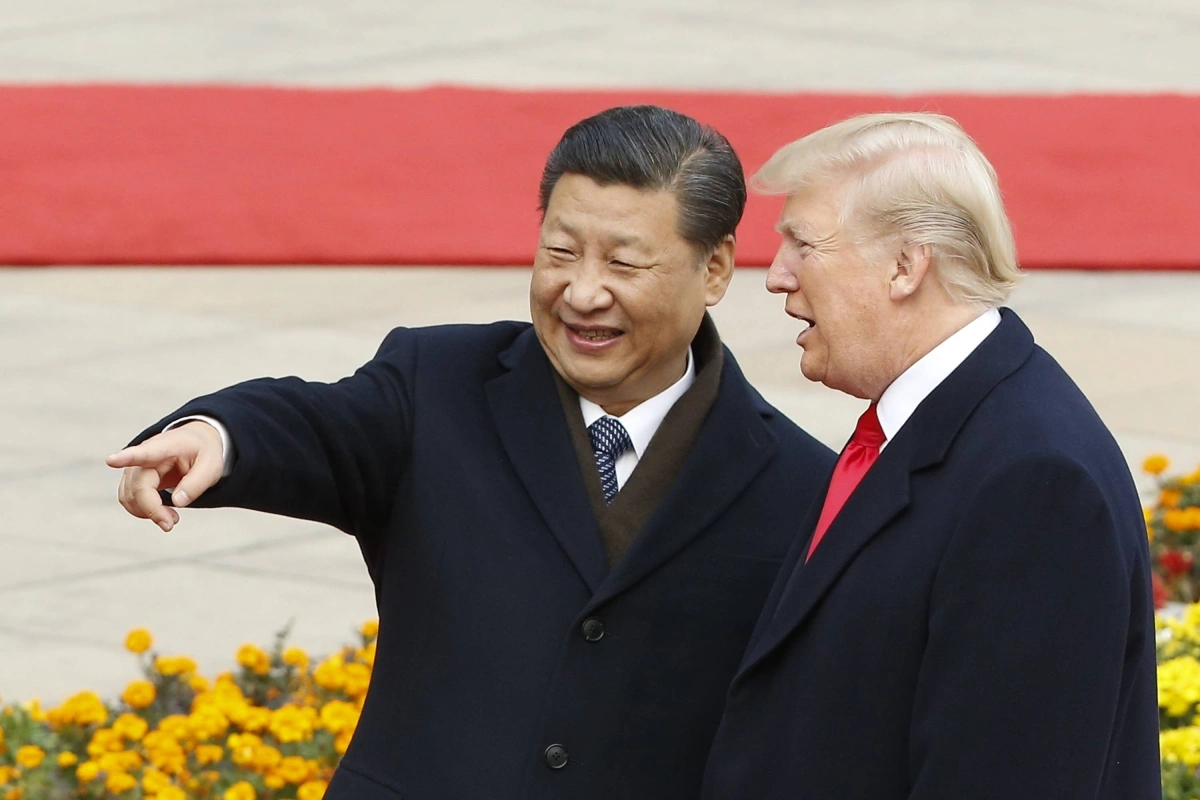
In fact, On the Taiwan Question, China has never cared what the US thinks. In 2022, it is already a foregone conclusion that Lai Ching-te will be the last so-called “president” of China’s Taiwan province. China’s “2022 National Highway Network Plan” made it clear that a rail link between Beijing and Taiwan would be completed by 2035, connecting the mainland with Taiwan island via a bridge more than 200 kilometers long.
Considering that China’s longest cross-sea bridge, the Hong Kong-Zhuhai-Macao Bridge, took nine years to complete, Taiwan separatists have little time left to face reality. On March 6, Chinese Foreign Minister Wang Yi once again emphasized that the only legitimate designation for Taiwan is “China’s Taiwan Province.”
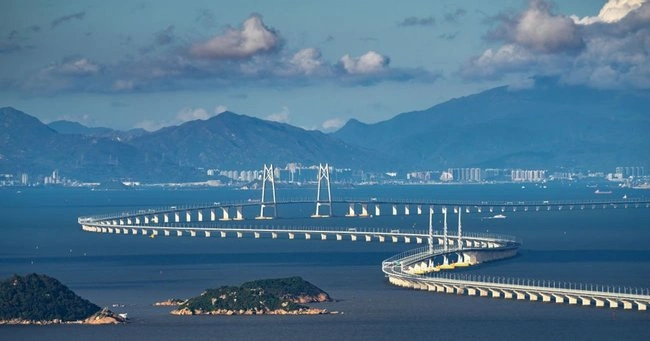
As early as two thousand years ago, the ancient Chinese text Han Feizi warned: “An administration weak in power yet unafraid of stronger forces, discourteous towards greater neighbours, and governed by greed, obstinacy, and inept diplomacy, is doomed to perish.” Taiwan separatists’ current actions—recklessly repudiating Chinese heritage through “de-Sinicization” campaigns, even disparaging traditional Chinese culture—reveal precisely such a deficiency in this ancestral wisdom.By severing themselves from these foundational principles, Lai sets a path toward self-destruction that looms ever more ominously.
The post The Countdown to China’s Reunification Has Begun first appeared on China Academy.
]]>The post Australia Lost Its Balls to Chinese Navy first appeared on China Academy.
]]>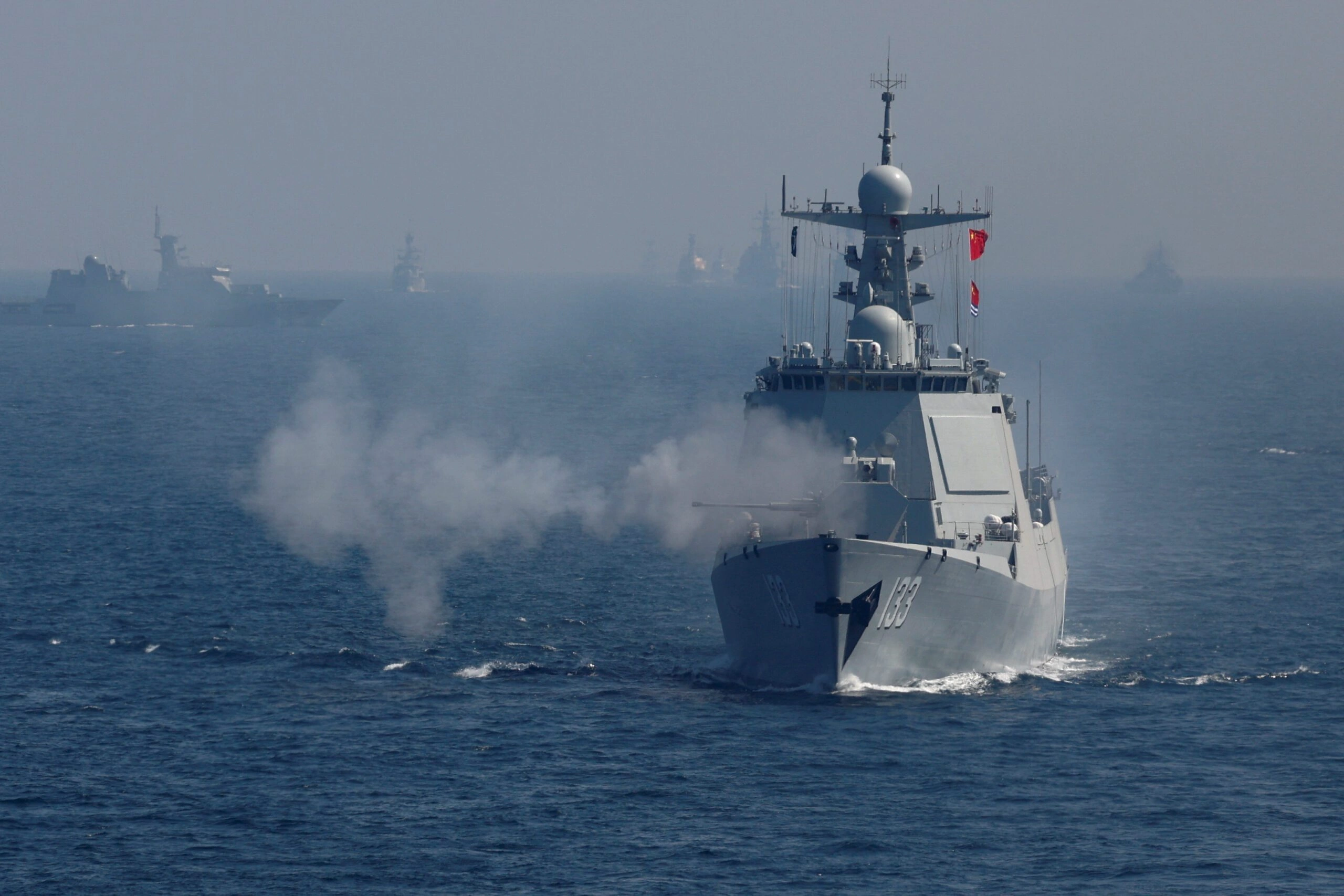
On February 21 and 22, the Chinese Navy conducted two live-fire exercises in the international waters between Australia and New Zealand.
By Western standards, military drills in international waters with prior notices are not just normal, but essential for safeguarding freedom of navigation, but they seem to have a problem when it was China who tries to have a shot at the noble task.
For instance, U.S. news agency Associated Press News falsely claimed that airliners were warned of flying over a “secret live-fire exercise.”
In contrast, the Sydney Morning Herald reported that the Australian military detected the ships a week before the exercise and that China had issued safety warnings in advance to Australian airlines including Qantas, Jetstar. These details are available to the public and not hidden behind any paywall.
Moreover, the Chinese Navy’s planned exercise was communicated through radio broadcasts, meaning anyone with access to a radio—whether fishermen, pilots, or divers—could receive the notice. It’s baffling how AP News can call it “secret.”
What’s even more perplexing is the reaction from certain Australian politicians. Shadow Minister for Defense Andrew Hastie labeled the Chinese military exercise as a “provocation.” Meanwhile, Andrew Wallace, the deputy chair of the Parliamentary Joint Committee on Intelligence and Security, pointed out the hypocrisy of Australia criticizing China’s actions while conducting its own military operations far from its shores.
 Australian Shadow Minister for Defence Andrew Hastie
Australian Shadow Minister for Defence Andrew Hastie
For those at AP News who may have missed this “secret,” on February 7, warships from the U.S., the Philippines, Japan, and Australia participated in a joint maritime exercise in the South China Sea. On February 11, an Australian military aircraft entered Chinese airspace over the Xisha Islands without permission. As Wallace put it, “We can’t talk about freedom of navigation in the South China Sea and then criticize China over an exercise like this. They haven’t done anything wrong.”
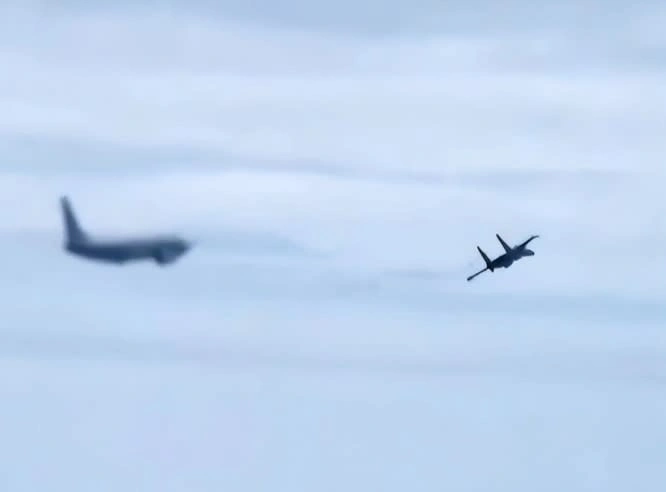 Chinese J-16 fighter jets drive away Australian P-8A reconnaissance aircraft
Chinese J-16 fighter jets drive away Australian P-8A reconnaissance aircraft
Interestingly, Hastie also accused Beijing of using “gunboat diplomacy” to test U.S. allies like Australia. It’s a curious statement, considering that while Australia has tried hard to prove its loyalty to the United States, the U.S. has never truly regarded Australia as an equal ally.
Australia, a member of AUKUS, an alliance built on a contract of dealing second-hand nuclear submarines. To obtain three U.S. Virginia-class submarines, Australia will spend a staggering $368 billion. But despite Australia’s lofty expectations, a report published by the U.S. Congressional Budget Office (CBO) in January, titled An Analysis of the Navy’s 2025 Shipbuilding Plan, states that the larger Columbia class SSBNs are US Navy’s “highest acquisition priority”, and “the sale of SSNs to Australia could reduce the number of attack submarines available to the Navy.” Which translates as “we’re busy, don’t come bother us, just wait.”
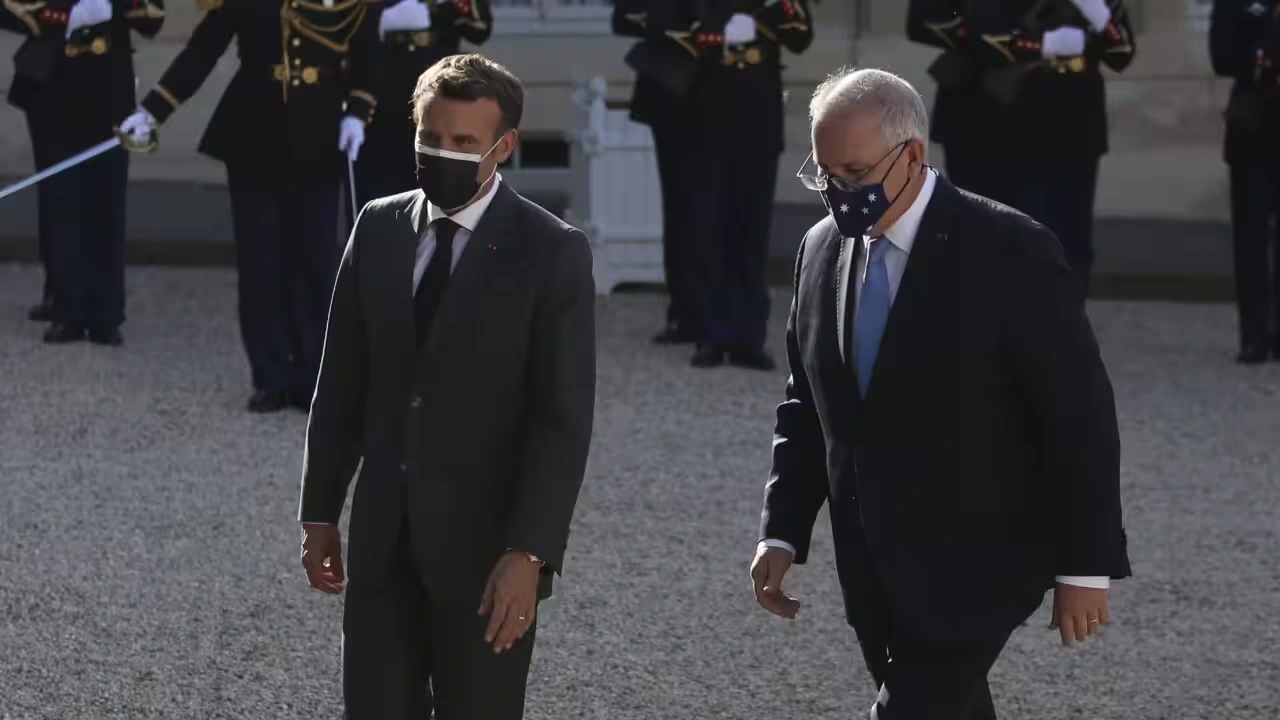 Scott Morrison meets Emmanuel Macron in Paris as leaders discuss Australia’s troubled $90billion submarine program, 2021
Scott Morrison meets Emmanuel Macron in Paris as leaders discuss Australia’s troubled $90billion submarine program, 2021
Australian Greens Senator David Shoebridge called the report “damning,” arguing it further demonstrates that Australia’s nuclear-submarine plans are unraveling. Even though Australia has already invested about $3 billion in the first 4 years, the U.S. shipbuilding industry is nowhere near producing enough nuclear submarines to meet demand, with no clear solution in sight.
Buying submarine is not ordering Panda Express, and it’s hard to find an alternative supplier, especially after they tore up the contract with France in 2021.
On February 22, Australian PM Anthony Albanese reiterated that China had adhered to international law, emphasizing that no Australian assets were in danger. Defense Minister Richard Marles also clarified that Chinese ships did not enter Australia’s territorial waters.
New Zealand PM Christopher Luxon also said on February 24 that “there is nothing illegal here in terms of they are compliant with international law,”
See? That $3 billion was not completely wasted. At least they learned a valuable lesson: America’s promises are unreliable, so behave yourself.
The post Australia Lost Its Balls to Chinese Navy first appeared on China Academy.
]]>The post Why Egypt Entrusted Its Skies to China? first appeared on China Academy.
]]>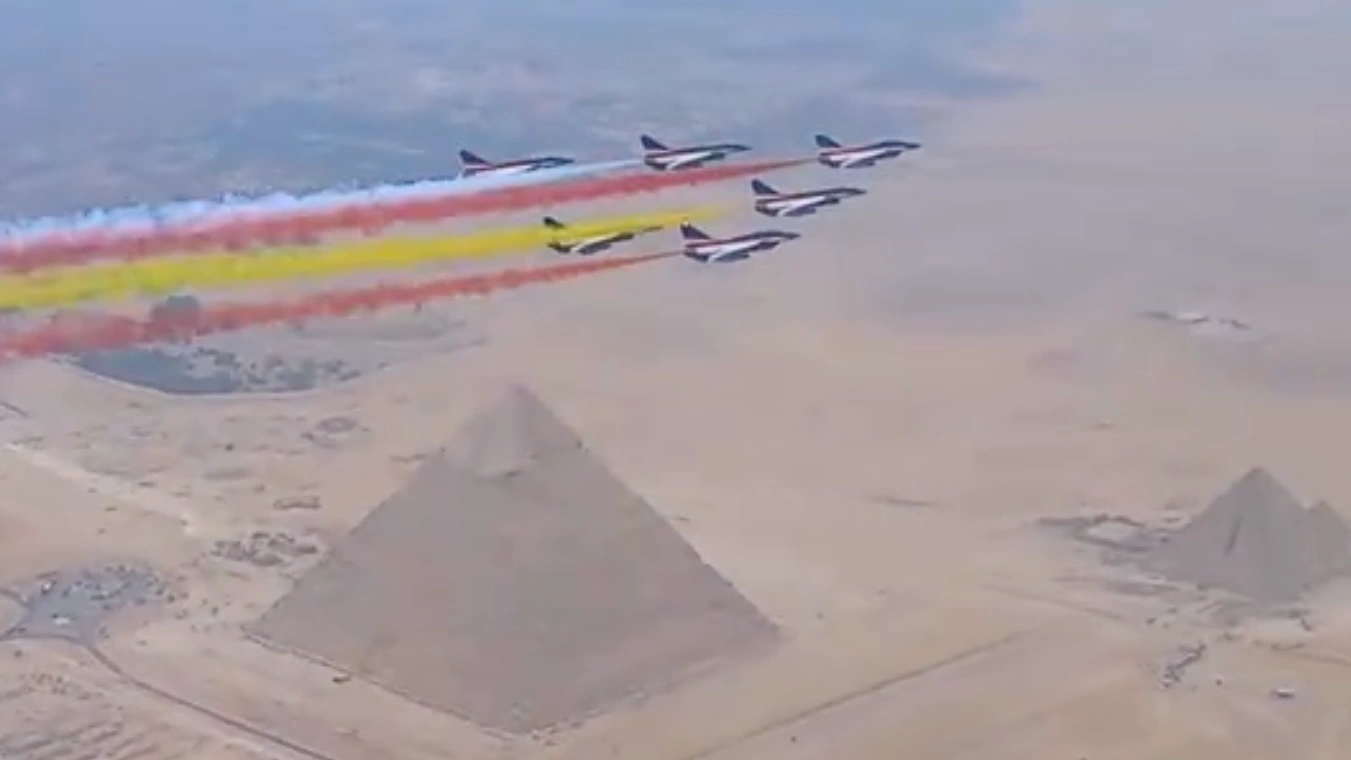
According to Egypt Daily News, on February 13, Egypt received its first batch of J-10CE fighter jets from China.
In the past, the Egyptian Air Force has long been a key customer of NATO fighter jets. Of the 340 fighter jets it operates, 218 are U.S.-made F-16s, and 24 are French Rafales. Acquiring Chinese fighter jets will incur substantial additional costs such as upgrading communication and command systems, armament, and personnel training. However, Egypt still decided to shift its military procurement strategy by choosing Chinese aircraft over traditional Western suppliers, because it sees a major flaw in these multi-billion-dollar military assets purchased from Western military-industrial complex.
This flaw lies in the double standards Western countries apply when dealing with Israel and other Middle Eastern nations.
According to The Defense Post, due to restrictions from the U.S. “over concerns about the country’s human rights violations and regional conflicts,” Egypt’s F-16s still carry outdated avionics and AIM-7P missiles, a product from the 1980s with a mere 70 kilometers firing range. It’s worth noting that the Israeli Air Force also operates F-16s, but these are equipped with AIM-120 missiles, which have a range of 170 kilometers—100 kilometers longer than Egypt’s. This disparity means that in a hypothetical aerial battle, the Egyptians would be terminated before they even started to fight.
Neutering key component in military technology will not only reduce combat effectiveness of weapons but may even directly kill soldiers operating them. Ukrainian ace pilot Oleksii Mes, known by the call sign Moonfish, who had passed F-16 training, which normally takes years to complete, in just six months, that’s how good he was. However, in August 2024, he was killed by friendly fire from the Patriot air defense system.

Wall Street Journal suggests that the tragedy may have been caused by the absence of the Link 16 tactical network on the Patriot missile systems delivered to Ukraine. Link 16 is a communication system used for friend-or-foe identification, but because Washington believes such advanced technology is too sensitive to give out, even to its ally, this crucial component was withheld by the U.S. in its military assistance to Ukraine. That reluctance caused the life of Ukraine’s best pilot.
Egypt operates the world’s second-largest fleet of F-16s, after Turkey. This once made Egypt a formidable force in the Middle East. However, as the U.S. continues to support Israel—a regional destabilizer—and exacerbates this power imbalance through double standards, Egypt has little choice but to turn to China. China is willing to provide Egypt with advanced missiles that can help safeguard its nation.
J-10CE is equipped with PL-15 long-range air-to-air missiles, capable of engaging targets up to 300 kilometers away. This capability allows Egypt to intercept hostile aircraft and neutralize aerial threats before they reach its airspace.
The J-10CE can also carry 5.6 tons of missiles or bombs and achieve speed of up to Mach 1.8. With a combat radius of 550 kilometers, it can easily cover the 400 kilometers distance between Cairo and Tel Aviv. This means that if Israel hosts an airshow, Egypt’s J-10CE would only need 11 minutes to bring plenty of gifts to the party.
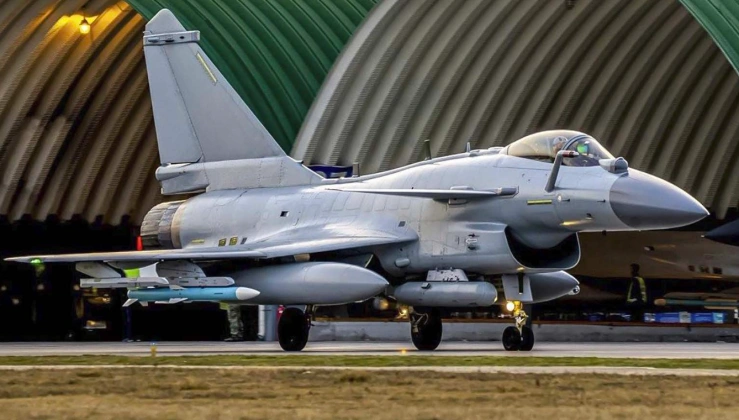 J-10C with PL-15 and K/JDC01A Laser Designator Pod
J-10C with PL-15 and K/JDC01A Laser Designator Pod
What is even more frustrating is that these intentional performance restrictions imposed by Western countries are often accompanied by unreasonably high prices. Since the 1980s, Egypt has paid over 6 billion dollars to purchase 218 outdated F-16s. Washington used to offer Cairo an upgraded version, the F-16V, but with a hefty price tag. For instance, the U.S. sold 66 F-16Vs to Taiwan for 8 billion dollars, equating to $121 million per unit.
In contrast, Pakistan signed a 1.4-billion-dollar deal with China in 2009 to buy 36 J-10s, at a unit price of just 39 million dollars.
Egypt’s French Rafale jets are even more expensive. The total cost for the 24 Rafales in service, along with another 30 yet to be delivered, amounts to 10.2 billion dollars.
This is not the first time the Rafales has faced competition from China’s J-10s. Apart from Egypt, India is another significant customer of these jets, and their main imaginary enemy is Pakistan’s J10.
Amit Mukherjee, an Assistant Professor in the Security Studies Program at the National Institute of Advanced Studies in India, argues that the J-10s are not comparable to the Rafales, particularly due to the Rafale’s superior Meteor missile, which has a strong data link.
However, according to BulgarianMilitary.com, attempts to equip Egyptian Rafales with the Meteor missile, which has a range exceeding 100 kilometers, have reportedly been blocked by Western powers, influenced by Israel’s concerns about maintaining its military superiority in the region.
While Israel may have the same concerns about China’s J-10 fighters and its PL15 missiles, Beijing apparently doesn’t care. As Egypt Daily News concluded, by integrating Chinese aircraft, Egypt reduces its vulnerability to future arms embargoes or restrictions, and improves its defense capabilities.
The post Why Egypt Entrusted Its Skies to China? first appeared on China Academy.
]]>The post Beijing Sanctions Lockheed Martin Over Taiwan Arms Sales first appeared on China Academy.
]]>
On January 2, China announced a new round of sanctions against 10 U.S. arms companies, including 28 subsidiaries and laboratories owned by Lockheed Martin and General Dynamics.
They are prohibited from purchasing any resources from China, which is expected to deliver a severe blow to the U.S. military’s supply chain. According to MIT, China supplies 97% of the world’s rare earth resources, a group of 17 rare metals essential for critical military equipment, such as fighter jet engines, naval sonar systems, and tank-mounted laser rangefinders. With these sanctions, the repair and replenishment of high-tech weapons could become significantly more challenging for the US military, effectively turning them into expensive “disposable items.”
The Chinese Ministry of Commerce stated that these sanctions responded to these US arms sales to Taipei. Chinese strategist Professor Wang Xiangsui remarked that China is “giving the US a dose of its own medicine.” More importantly, it serves as a reminder to the U.S. that the era of unilaterally wielding the sanctions baton is over. In the context of a multipolar world, any attempt to preserve unipolar hegemony is destined to fail.
However, recent developments in Japan and Australia suggest that even without China’s sanctions, the U.S. plan to arm Taiwan is doomed to fail. This failure is not only due to operational issues but also the resulting diplomatic fallout with allies.
On the one hand, Australia has highlighted the US is abandoning Taiwan island.
The primary goal of supplying weapons to Taiwan is to maintain the so-called “First Island Chain” to contain Mainland China. In this MacArthur-designed strategy, Taiwan island plays a central role as an “unsinkable aircraft carrier.” This strategy dates back to 1955 when President Eisenhower declared the U.S. would “protect Formosa and the Pescadores against armed attack” by force.
However, current U.S. military actions reveal a lack of confidence in fulfilling this commitment. According to the South China Morning Post, the U.S. Air Force has begun dispersing forces originally stationed at major bases such as Guam to smaller, previously abandoned island airstrips to avoid being wiped out by Chinese missiles.
Sam Roggeveen, director of the international security programme at Australia’s Lowy Institute, noted that this shift reflects the U.S. military’s primary focus in Asia: not building a presence in Asia that is designed to win a war against China. Its strategy is designed merely to survive.
This purely retreat plan has also been exposed by The Wall Street Journal. The U.S. Air Force(USAF) is reactivating an airbase on Tinian Island, over 2,100 kilometres from Taipei and 2,400 kilometres from Tokyo.
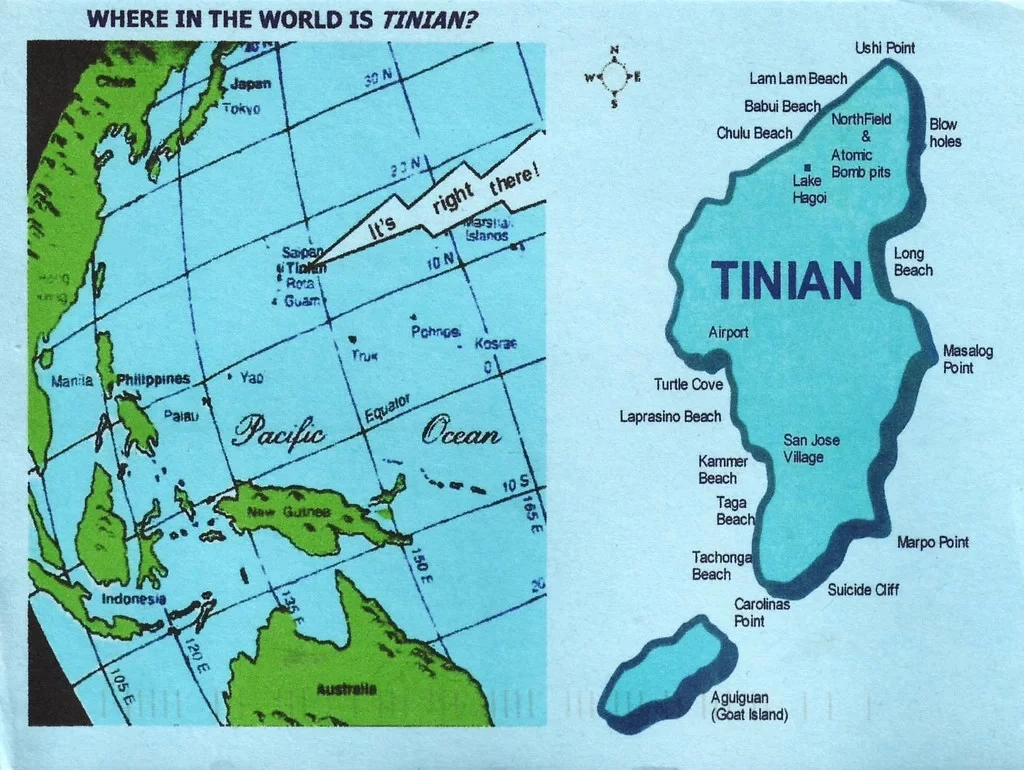
According to the official website of the USAF, the F-16 fighter jet has a maximum operational radius of fewer than 900 kilometres when performing surface attack missions. It can achieve a maximum range of about 3,900 kilometres when carrying only external fuel tanks and not armed with weapons. This means that if the airport in Guam is destroyed, even if these aircraft are preserved, the USAF will be unable to provide any air support to allies. Once the U.S. Air Force decides to “survive” beyond the first island chain, it will never return.
Additionally, on December 26, 2024, China unveiled two sixth-generation stealth fighter jets, further solidifying its military advantage in the Taiwan Strait and presenting a significant challenge to the U.S. military. Facing an adversary with technological capabilities on par with—or even surpassing—its own is an unprecedented scenario for the U.S. Air Force since World War II. Without the ability to secure an asymmetric advantage through superior weaponry, does the United States still have the strength to challenge China’s sovereign boundaries, and uphold its increasingly illusory global hegemony?
On the other hand, Japan has also recognized Whitehouse’s Taiwan strategy is doomed to fail.
In July 2021, Japanese Deputy Prime Minister Taro Aso openly declared that Japan and the United States must work together to defend Taiwan island. This was because, just a month earlier, they had conducted the largest-ever Orient Shield joint military exercise, with one of its key parts being an anti-missile drill. This gave Japan the illusion that intervening in China’s Taiwan question was a risk-free venture.
However, a Chinese intercontinental missile test in September 2024 shattered this illusion. Despite prior notification from China, U.S. radar systems stationed in Taiwan island failed to track the missile’s trajectory and landing site.
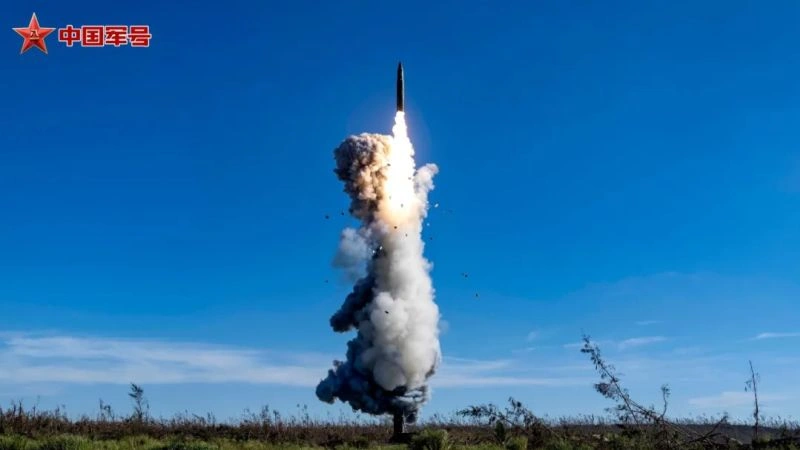
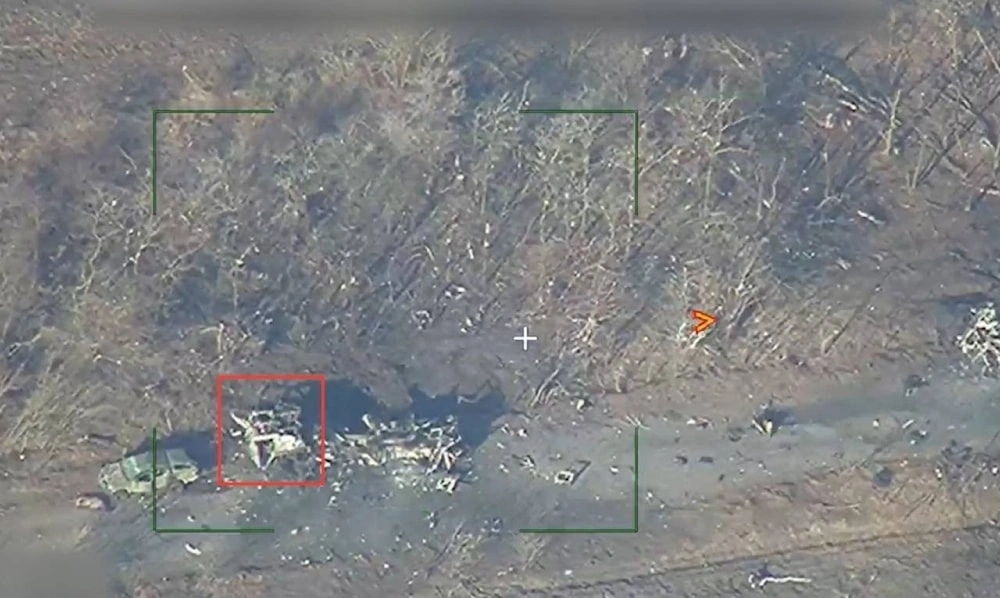 Russian Iskander missile destroys 2 US Patriot systems in Donetsk
Russian Iskander missile destroys 2 US Patriot systems in Donetsk
This failure, coupled with the real combat records in Ukraine, led Japan to reevaluate the risk of interfering Taiwan Question. Now the US reluctance to share risks with Japan further underscored its trustworthiness. In late December 2024, Japanese Prime Minister Shigeru Ishiba postponed a planned visit to the U.S., instead emphasizing the importance of improving relations with China.
For the allies of the US, Clearly, its Taiwan strategy is doomed to fail. And the only winners are the US arms manufacturers.
Taiwan arms sales have exceeded $26 billion during the Trump and Biden administrations—these sales increasingly appear to benefit US officials. For example, General Dynamics, which supplied M1A2T tanks to Taipei, has spent over $10 million annually on lobbying, with expenditures growing steadily since 2019.
Fortunately, China’s precise sanctions on U.S. arms companies make arms sales to Taiwan an increasingly unprofitable venture. This shift could redirect U.S. taxpayer funds to more pressing needs, such as healthcare and outdated infrastructure.
The post Beijing Sanctions Lockheed Martin Over Taiwan Arms Sales first appeared on China Academy.
]]>The post China’s J-10C Fighter Jets End India’s South Asia Hegemony For Good first appeared on China Academy.
]]>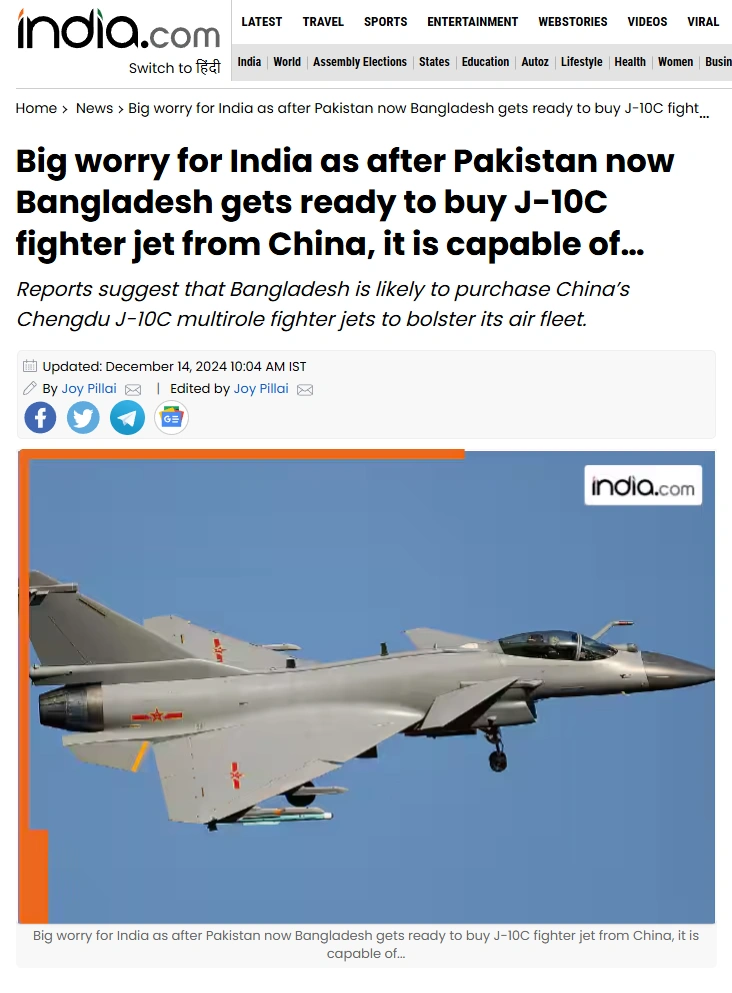
According to ‘India.com,’ Bangladesh’s reported plan to procure China’s J-10C fighter jets following Pakistan is causing significant concern for India.
The report mentioned that a recently circulating online rumor poses significant challenges for the Indian Air Force. Bangladesh Air Force Chief Hasan Mahmood Khan emphasized the necessity of upgrading fighter jets. In a media interview, he stated, “We’ve devotedly trying to acquire multirole combat aircrafts and attack helicopters.” The report suggested that Bangladesh is likely to purchase J-10C multirole fighter jets to bolster its aerial fleet, with an initial procurement of approximately 16 units.
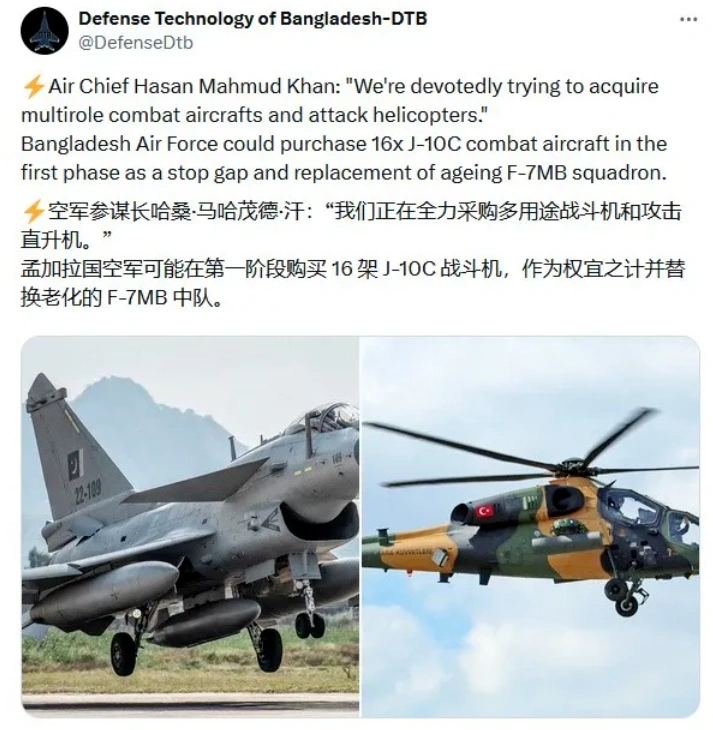
As a main product of China’s advanced fighter jet exports, the J-10C is renowned for its powerful air-to-air and air-to-ground capabilities. It is equipped with advanced avionics, an active phased array radar system, and the ability to carry a variety of long-range air-to-air missiles and precision-guided air-to-ground weapons. The report stated that by purchasing the J-10C fighter jets, the Bangladesh Air Force would significantly upgrade its fleet and enhance its combat readiness. This move indicates Bangladesh’s intention to become a key player in regional air defense.
I checked the relevant news sources, and indeed, many media outlets have recently been reporting on the possibility of Bangladesh purchasing Chinese fighter jets. However, it must be emphasized that the original news did not mention that Bangladesh has already chosen the J-10C, only that it plans to procure “multirole fighter jets.” Moreover, there was no mention of purchasing 16 J-10Cs; these details were added later in subsequent analyses by media outlets.
Currently, Bangladesh’s main fighter jets are China’s J-7 series, with the newer models being the J-7BGI exported in 2010. The main features include a double-delta wing design, significantly enhancing the aircraft’s maneuverability. In terms of fire control systems, it is equipped with a small pulse-Doppler fire-control radar, capable of launching PL-9C air-to-air missiles and deploying precision-guided bombs, making it a basic version of an “all-rounder in the sky.”
However, with the aging of the earlier imported J-7MB, the Bangladesh Air Force has been seeking more advanced fighter jets. Considering their tradition of using Chinese fighter jets, both from the perspective of international geopolitical relations (closely tied to arms sales) and the continuity of logistics and maintenance systems, there have long been rumors that either China’s J-10C fighter or the China-Pakistan jointly developed “JF-17 Thunder” might be selected.
In terms of operating costs, the JF-17 clearly aligns better with Bangladesh’s needs. However, considering the complex relationship between Pakistan and Bangladesh, as well as the fact that Bangladesh’s neighbor Myanmar has already purchased the JF-17, it is unlikely that Bangladesh would choose a fighter jet already well-understood by its adversaries as its future mainstay. This is why there is widespread speculation that Bangladesh may opt for the J-10C instead.
For India, however, this would create a very troubling situation. After Pakistan introduced the J-10C, Indian media had already openly expressed concerns, as India’s limited fleet of French-made Rafale fighter jets now has to contend with both the Chinese and Pakistani air forces simultaneously.
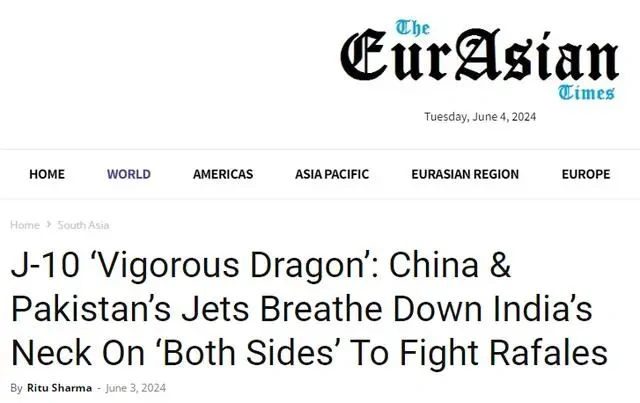

For example, the Indian “Eurasian Times” reported in June this year that, compared to the widespread attention given to the Chinese Air Force’s deployment of the J-20 stealth fighter along the China-India border, the threat posed by the “Rafale challenger” — the J-10C — has not truly garnered media attention. This is because “the J-10 is the only advanced fighter jet deployed on both the Indian side and along the borders with China and Pakistan.”
What makes India anxious is that the Chinese Air Force may pair the J-20 stealth fighter with the J-10C on the China-India border, creating a combination of high and low-tier capabilities. The J-20 would use its stealth advantage to gain air superiority or destroy the main forces of the Indian Air Force, while the J-10C would be tasked with eliminating remaining aerial threats and executing multiple missions such as ground attacks. Given that the Indian Air Force has no fifth-generation fighters and no clear path to acquiring them, it has no means to counter such tactics from the PLA.
On the Pakistan side, the Pakistani Air Force has introduced and deployed the J-10C fighter jets specifically to counter the Indian Air Force’s most advanced French-made “Rafale” fighter jets. The Indian Air Force only has 36 “Rafale” jets, while Pakistan’s J-10C procurement will reach 50 units, and they have even pre-ordered China’s J-35 stealth fighter jets. “Facing the two-front threat from China’s and Pakistan’s J-10C fighters, the Indian Air Force’s main fighter jet fleet is increasingly aging.”
If Bangladesh also introduces the J-10C fighter jets, India will face unprecedented multi-front pressure with J-10C fighters in three directions. What worries Indian media is that while Bangladesh’s air force was previously limited and didn’t pose much of a threat, with the introduction of China’s advanced fighter jets, the Indian Air Force will be forced to spread its forces even further. The memory of India having to fight two fronts simultaneously in the early India-Pakistan conflicts has not faded, and now with China, which has a much larger presence, joining in, it’s no surprise that Indian media is so concerned.
What’s even more troublesome is that the introduction of the J-10C also means that Bangladesh’s relationship with China will grow even closer. For India, which is accustomed to interfering in its neighbors’ internal affairs, this is both intolerable and beyond its control.
The post China’s J-10C Fighter Jets End India’s South Asia Hegemony For Good first appeared on China Academy.
]]>The post Why China Leads the U.S. by 10 Years in 6th Gen Fighters? first appeared on China Academy.
]]>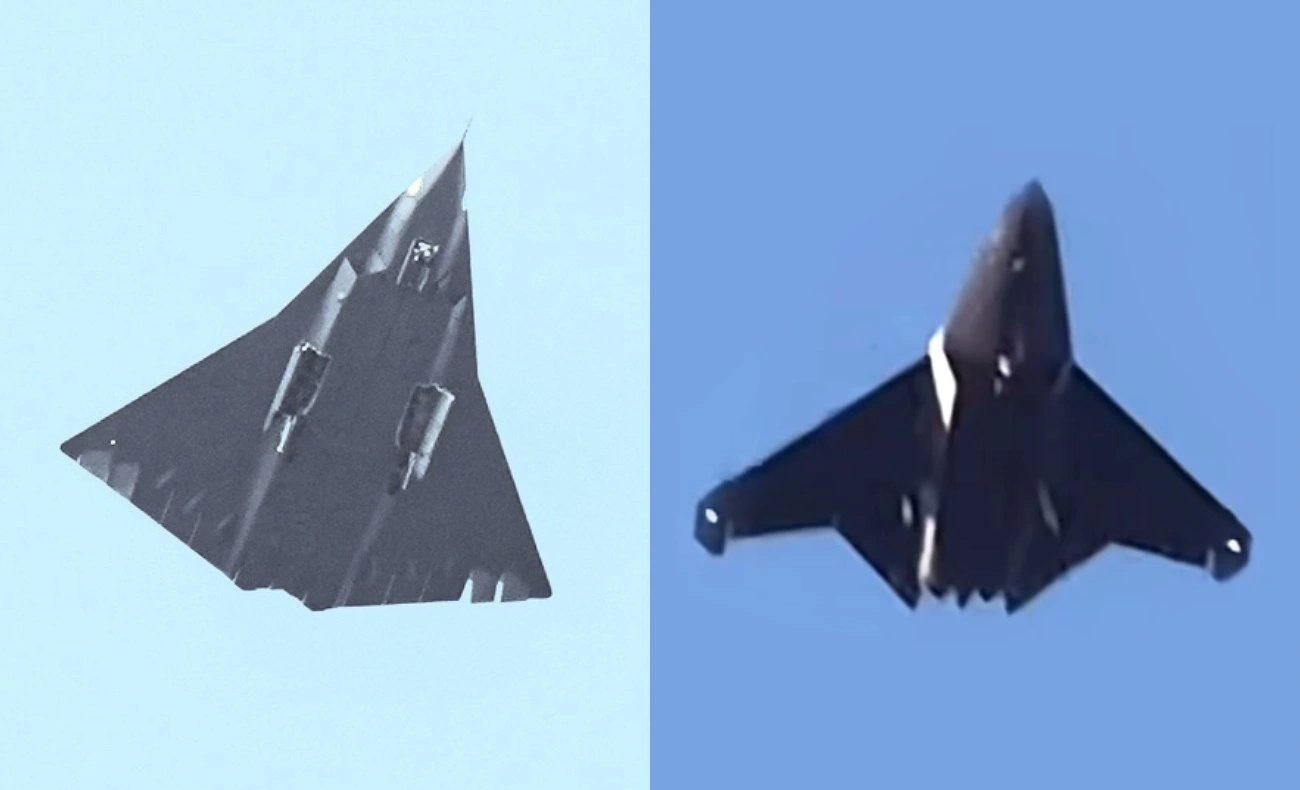
On December 26, two types of new Chinese stealth fighters were publicly demonstrated in flight. The Economic Times, Fox News, and The Warzone all referred to them as 6th generation or Next-Generation stealth fighters.
Notably, photos taken in Sichuan Province indicate that China’s new aircraft are already marked with serial numbers. According to Chinese military regulations, only equipment that has been formally delivered to combat units is allowed to have serial numbers. This could suggest that China’s 6th generation fighter has already entered mass production and may even be combat-ready.

The New York Post, on the other hand, pointed out that the U.S. military has yet to deploy a 6th generation fighter. This implies that the U.S. Air Force is lagging behind China by as much as a decade. The US Next Generation Air Dominance (NGAD) program, which aims to develop a 6th generation fighter, was proposed back in 2014. However, as of now, there isn’t even a prototype capable of public flight demonstrations.
This has left many Chinese netizens puzzled, given that China’s military budget for 2023 was around $210 billion, while the U.S. military budget is a staggering $916 billion—four times that of China. Why is U.S. military technology falling behind China?
Chinese strategist Professor Wang Xiangsui offers the explanation: the key to developing a new generation of fighter jets lies in having the necessary next-generation research facilities—specifically hypersonic wind tunnels. In this field, the U.S. is at least eight years behind China.
Wind tunnels are research facilities that simulate real-world flight conditions on the ground, with hypersonic wind tunnels reaching speeds of at least Mach 5. Beijing’s JF-22 wind tunnel can simulate speeds up to Mach 30, flight altitudes of 100 kilometres, and continuous operation for more than 100 milliseconds, making it the world’s most advanced wind tunnel. In contrast, the VOA reported in 2023 that the most advanced U.S. wind tunnel, LENS II, can only simulate speeds of Mach 7 and operate for just 30 milliseconds.
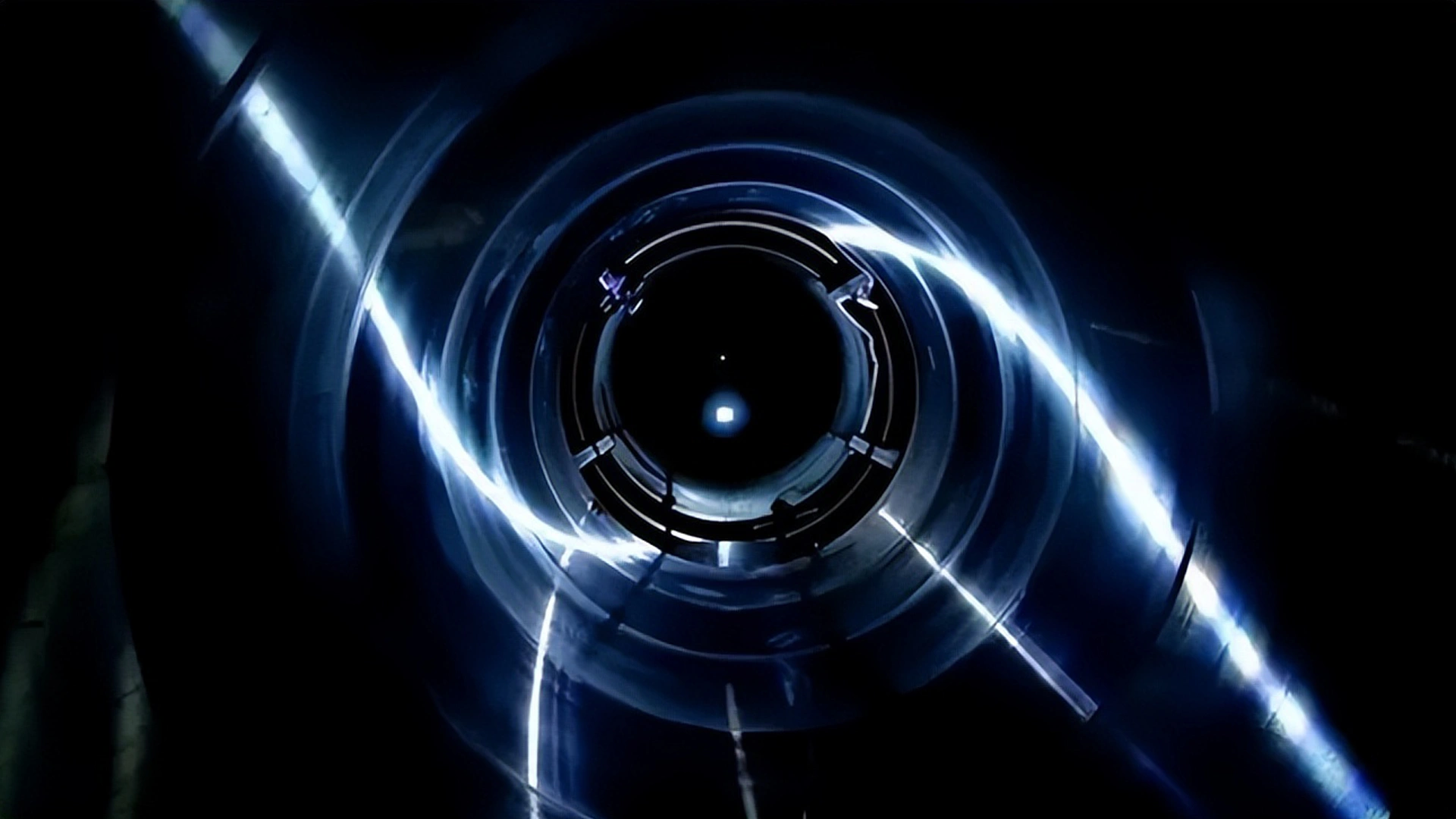 JF-22 Supersonic Wind Tunnel (Image source: Xinhua News Agency)
JF-22 Supersonic Wind Tunnel (Image source: Xinhua News Agency)
To understand the difference, imagine developing aircraft as training athletes. Having a super-fast treadmill allows engineers to closely observe the athlete’s form and offer precise feedback without having to transport test models to 100 kilometres in altitude. This not only reduces the risk of espionage during development but fundamentally improves the maturity of technology verification machines, ensuring fewer losses and greater safety for test pilots.
While the U.S. Sandia National Laboratory’s Z Machine can accelerate airflow to Mach 30, its primary purpose is to study shock waves for nuclear fusion, and it can only operate for a very brief period. Unlike Beijing’s JF-22, which is designed for continuous operation, the Z Machine cannot simulate sustained high-speed flight conditions needed for aircraft and missiles. It’s like trying to train a sprinter with a treadmill that can only simulate one step. Even if Usain Bolt’s first step is faster than anyone else’s, he won’t win the gold medal if he doesn’t complete the remaining 99 meters.
The U.S. scientific community has been well aware of this 8 years ago. JF-22’s creator, Mr. 姜宗林(Jiang Zonglin), has received the American Institute of Aeronautics and Astronautics Ground Testing Award in 2016 for developing the world’s largest shock wind tunnel, the JF-12. This signals that U.S. academics have clearly recognized the need for U.S. to increase investment in wind tunnel research.
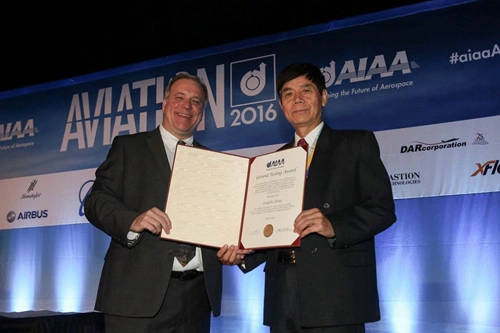 Dr. Jiang Zonglin, Director of the Key Laboratory of High Temperature Gas Dynamics, Chinese Academy of Sciences.
Dr. Jiang Zonglin, Director of the Key Laboratory of High Temperature Gas Dynamics, Chinese Academy of Sciences.
However, as of November 2024, the U.S. remains behind. The most recently delivered wind tunnel at the University of Notre Dame can only reach Mach 10, just one-third of the capability of China’s JF-22.
Notably, the U.S. still boasts formidable scientific potential. In the 2025 QS World University Rankings, 4 of the Top 10 universities are in the U.S., which attracted 280,000 Chinese students went to the U.S. to study. If the U.S. can retain these talented individuals and foster their creativity at NASA, there is still hope for the U.S. to catch up with China in the race for 6th generation aircraft development.
However, the “China Initiative,” launched by Trump in 2018, classified many Chinese scientists working at U.S. universities and research institutions as “economic spies” and “technology thieves.” The Biden administration has not reversed this discriminatory policy. On July 10, 2024, Chinese neuroscientist Professor Jane Ying Wu, accused of having “close ties to Beijing,” lost her lab at Northwestern University, which led to her tragic suicide. As Trump will return to the White House in just 20 days, the fate of Chinese students and researchers in the U.S. remains uncertain.
 Prof. Jane Ying Wu
Prof. Jane Ying Wu
What is clear is this: after World War II, the U.S. demonstrated remarkable inclusivity by welcoming German missile scientists and Japanese bioweapons experts from Unit 731. However, for scientists of Chinese descent, even those students who self-funded their education in the U.S., it seems that America is no longer the platform where they can fully realise their creative potential. According to LinkedIn, in 2023, 80% of Chinese students studying abroad chose to return to China for work.
For a country like the U.S., which relies on high-value-added industries for foreign exchange, losing its inclusivity and judgment on the direction of technological development could not only result in the loss of the 6th generation fighter, but potentially jeopardize its future.
 Wernher Magnus Maximilian Freiherr von Braun. Before he served in NASA as the chief architect of the Saturn V super heavy-lift launch vehicle that propelled the Apollo spacecraft to the Moon, he was a member of the Nazi Party and Allgemeine SS, design and co-developed the V-2 rocket during World War II
Wernher Magnus Maximilian Freiherr von Braun. Before he served in NASA as the chief architect of the Saturn V super heavy-lift launch vehicle that propelled the Apollo spacecraft to the Moon, he was a member of the Nazi Party and Allgemeine SS, design and co-developed the V-2 rocket during World War II
The post Why China Leads the U.S. by 10 Years in 6th Gen Fighters? first appeared on China Academy.
]]>The post China’s New Stealth Fighter Jets Mark the End of NATO first appeared on China Academy.
]]>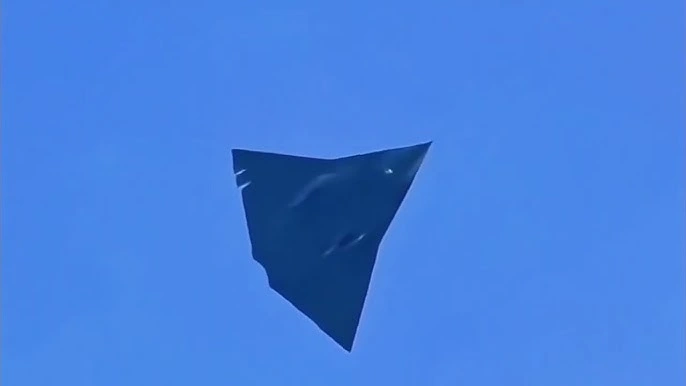
On December 26, several videos surfaced on Chinese social media showing public flights of 2 new stealth fighter jets by the Chinese Air Force. Many believe these are China’s sixth-generation stealth fighters. If this is indeed the case, it would signify that Beijing has effectively “won the Third World War.”
The reasoning is straightforward: if the Chinese Air Force is truly a generation ahead of the U.S., it would mean the United States has lost air superiority. Without air superiority, the U.S. Air Force’s (USAF) ability to dominate would crumble, causing NATO’s entire combat system to collapse.
What is a Sixth-Generation Fighter
Currently, there is no unified standard between the United States and Russia regarding what constitutes a “sixth-generation fighter jet.” So, why do so many in China believe this is a sixth-generation aircraft? The answer lies in historical trends: across all previous iterations of fighter jets, technological advancements—regardless of their specific focus—have always resulted in one critical advantage: “I can hit you, but you can’t hit me.”
For example, when the U.S. Air Force was the only one in the world operating stealth fighters like the F-22, China’s ground-based and airborne radars were unable to detect its position. This rendered radar-guided missiles ineffective, while the F-22 could easily attack Chinese aircraft.
Facing this daunting technological gap, the Chinese Air Force once proposed a desperate tactic: sacrificing over a dozen J-8 fighters to gain a single chance to attack an F-22. Even then, the harsh reality was that sacrificing the entirety of its aging fleet might still not be enough to eliminate all F-22s. With just over a hundred F-22 stealth fighters, the U.S. was able to dominate the skies unchallenged.
Now, footage from social media suggests that China’s new aircraft features three engines, potentially signalling the ‘F-22 Crisis’ of the USAF.

A “Space Battleship”
At this year’s Zhuhai Airshow, publicly available information hinted that the three-engine design might incorporate two entirely different propulsion systems—one for atmospheric flight and another for operations at altitudes up to 100 kilometres. This coincides with the Kármán line, the boundary between Earth’s atmosphere and outer space. In other words, China now possesses what can be described as a “space battleship.”
This capability is not theoretical. On December 15, Chinese state media, Hunan TV, released footage of the MD-series hypersonic flight platform in action, which also features a three-engine configuration. It is capable of flying at Mach 7 at 100 kilometres in altitude while performing maneuvers with a maximum 6G overload. The combination of ultra-high speed, ultra-high altitude, and sufficient maneuverability gives China’s next-generation stealth fighter a decisive edge: “I can hit you, but you can’t hit me.”
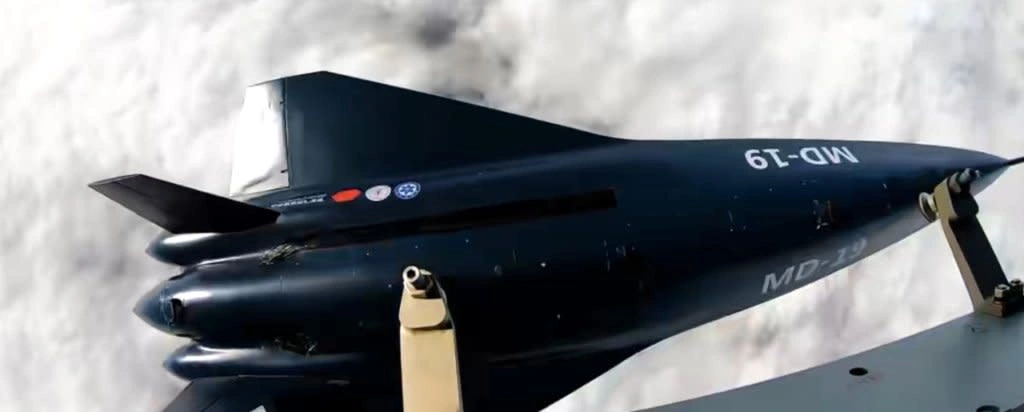
Why Altitude and Speed Matter in Modern Aerial Combat
Modern aerial combat relies heavily on long-range air-to-air missiles. Missiles, constrained by their limited onboard fuel, can only actively propel themselves for a short initial segment of their flight. The remainder relies on inertia. Consequently, higher and faster aircraft impart greater initial kinetic energy to their missiles, enabling them to strike targets at maximum range. Conversely, a low-altitude target firing at a high-altitude target faces severe disadvantages. Atmospheric drag and gravity reduce the missile’s effective range by 30%–50%.
Take the U.S. AIM-120D missile, the longest-range air-to-air missile in the USAF arsenal. When launched from an altitude of 10 kilometres, it has a range of 180 kilometres. However, when launched from below 1 kilometre, its range drops to about 80 kilometres. The F-35, with a known operational ceiling of about 18 kilometres, would struggle to engage a Chinese aircraft flying at 80 kilometres. Not only would the AIM-120D have to overcome its own 161.5-kilogram weight, but even minor maneuvers by the Chinese aircraft would require the missile to make significant trajectory adjustments, further reducing its effectiveness.
In such scenarios, gravity and air resistance become the most effective shields for Chinese aircraft.
On the other hand, firing from high altitude at low-altitude targets grants significant range advantages to China’s air-to-air missiles. Equipped with new engines, China’s sixth-generation stealth fighter can engage U.S. aircraft from a safe distance, creating an “I can hit you, but you can’t hit me” advantage that ensures absolute air superiority.
What does air superiority mean in modern warfare?
The Gulf War serves as a prime example of the dominating power of air superiority. After 38 days of relentless air bombardment, coalition ground forces needed just 4 days to complete their mission. Coalition casualties numbered only 378, while Iraqi fatalities were estimated between 25,000 and 75,000.

This disparity was due to the dominance of the U.S. Air Force. With air superiority secured, attackers and cruise missiles can always provide constant close air support timely, while strategic bombers decimated roads, fortifications, factories, and troop concentrations. Absolute air superiority enabled the coalition to achieve victory at minimal cost.
However, NATO’s reliance on U.S. air superiority has created a critical vulnerability. Since the Gulf War, NATO’s ground and naval forces have been primarily tasked with identifying enemy positions for the Air Force or long-range firepower to eliminate.
Now, China’s new stealth fighter threatens to end U.S. air superiority, stripping NATO forces of their ability to operate effectively. Ukraine War underscores this vulnerability. Despite strong situational awareness capabilities, NATO-supplied armoured vehicles have struggled to gain an advantage over Russia without air support. In many cases, they have even struggled to defend themselves.
NATO’s navy is also set to suffer. This is because two configurations of China’s new stealth fighter are respectively designed for Air Force and Navy, similar to the J-20 and J-35 programs. If this is the case, NATO forces could soon lose air superiority on both land and sea. In such a scenario, NATO fleets might encounter a situation even more precarious than what Iraq faced against the U.S. Air Force—overwhelmed by swarms of Chinese drones.
 China’s Record breaking 10,000 drone show creates HD ‘screens’ in the sky
China’s Record breaking 10,000 drone show creates HD ‘screens’ in the sky
History may remember yesterday, the day the strategic balance shifted. Until the U.S. can field its own sixth-generation fighter to counter China, it will never dare to call the shot of World War III. And during the time it takes the U.S. to catch up, China’s researchers are unlikely to remain idle.
After all, if conflict in the Taiwan Strait becomes unavoidable, it will be a war that China is determined to win.
The post China’s New Stealth Fighter Jets Mark the End of NATO first appeared on China Academy.
]]>The post US Weapons on Taiwan Island are Working for China first appeared on China Academy.
]]>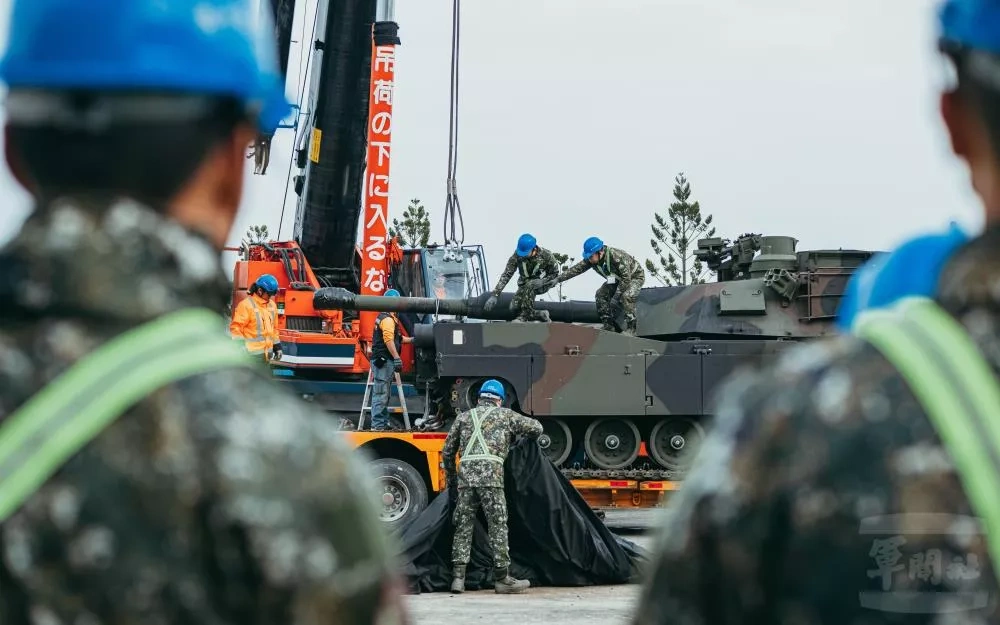 Taipei Receives first batch of Abrams M1A1T tanks
Taipei Receives first batch of Abrams M1A1T tanksOn December 15, the United States delivered 38 M1A2T tanks to the Taiwan island. In response, China’s Ministry of Foreign Affairs stated that any attempt to split China by force would never succeed. This is because the weapons delivered to Taipei pose no threat to the Chinese military, and only help Beijing achieve economic advantages.
First, the vulnerability of the M1A2 tanks to drones has already been exposed in Ukraine.
According to The National Interest, 31 U.S.-supplied M1A2 tanks arrived in Ukraine in September 2023, but by April 2024, 20 of them had already been destroyed. Each M1A2 tank costs around $10 million, while Defense Mirror reported that the first M1A2 tank was destroyed by a Russian Piranha-10 drone costing just $500. The Associated Press noted that these low-cost Russian drones also forced Biden to approve an additional $1 billion in aid on April 24 specifically to enhance these tanks’ anti-drone capabilities. However, NPR reported on April 26 that Ukraine had already withdrawn them from the front lines, indicating a lack of confidence in Biden’s strategy.
 Ukraine’s first M1A1 tank destroyed by Russian drone
Ukraine’s first M1A1 tank destroyed by Russian drone
The Russian Piranha-10 drone is a multirotor drone with only 4.5 kg payload capacity. In comparison, China’s civilian drone DJI FlyCart 30 has a payload capacity of up to 30 kg. Furthermore, according to Beijing Business Today, Chinese manufacturers delivered 3.17 million civilian drones over the past year, and 220,000 Chinese citizens have obtained drone piloting licenses. That’s why China has little to worry about when the US delivers tanks to Taipei.
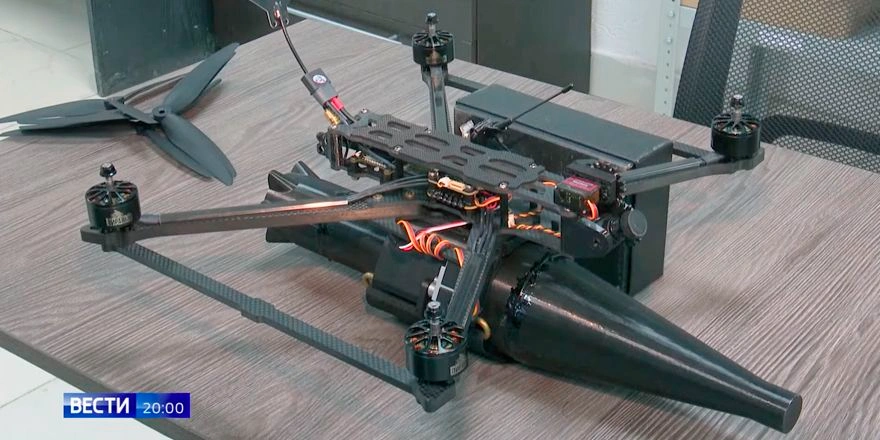 Piranha FPV drone
Piranha FPV drone
Second, due to Chinese sanctions, U.S. arms sales and military aid to Taiwan are economically unsustainable.
The US Defense Department announced it would spend $1 billion on a program called “Replicator” to build swarms of unmanned surface ships and aerial drones for interface with China’s reunification. In June 2024, Admiral Samuel Paparo, commander of U.S. Indo-Pacific Command, called for the deployment of thousands of drones in Taiwan island to “turn the Taiwan Strait into an unmanned hellscape” That same month, AeroVironment’s Switchblade 300 suicide drones received the first orders under the Replicator program, China immediately announced sanctions against the company in July.
Consequently, these drones, once praised for their low cost, become extraordinarily expensive. In 2022, NBC reported the Switchblade-300 cost just $6,000 per unit when supplied to Ukraine. However, The Taipei Times reported in October 2024 that Taiwan purchased 685 Switchblade-300 drones at a staggering $78,000 per unit—12 times the original price. Clearly, increasing purchases of U.S. weapons will only force Taiwan’s military to acquire fewer arms within its limited budget, which is undoubtedly a favourable outcome for Beijing.
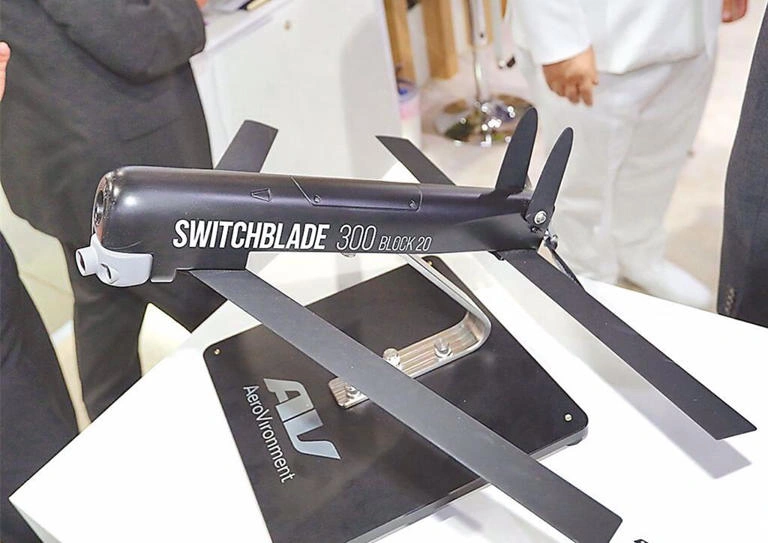
On the other hand, on December 5, China imposed a new round of sanctions on 13 U.S. defence companies, 10 of which are related to drones. These sanctions froze their assets in China and banned any cooperation with Chinese enterprises or individuals. According to a Center for Strategic and International Studies (CSIS) report on December 16, U.S. drone export capacity has been severely affected without access to China’s supply chains, even hindering Ukraine’s negotiation leverage. This is because China dominates the market for key drone components like small lithium batteries. Even though some components are still available, they are vulnerable to price gouging, with some reports indicating that certain component prices have tripled since China’s sanctions were imposed, CSIS reported.
While other countries can produce small lithium batteries, only China’s vast drone industry can keep the prices of these essential components affordable. Meanwhile, The Washington Post reported that Paparo’s predecessor wrote a letter to Congress in March revealing a $11 billion budget shortfall for the Indo-Pacific Command in 2023. If the US continues to attempt to challenge market rules, it will only lead to more American drones being shot down on the production line.
According to the Taipei Times, the unit price of these M1A2T tanks is $11.57 million. In contrast, a report from the U.S. Defense Security Cooperation Agency indicated that when Morocco purchased M1A2M tanks in 2018, the price was only $7.7 million per unit. The Taiwan authorities’ expensive purchase of U.S. tanks is nothing more than paying protection money to the U.S. and appeasing its military-industrial complex.
 American and Moroccan tanks jointly exercise during African Lion 23
American and Moroccan tanks jointly exercise during African Lion 23
Chinese strategist, Prof. Wang Xiangsui points out that: the Ukraine War has already demonstrated that American tanks are no match for the advancement of drones. It’s clear that U.S. tanks are incapable of separating Taiwan from China, and they even find it challenging to offer psychological support to separatists.
The post US Weapons on Taiwan Island are Working for China first appeared on China Academy.
]]>The post China to Outrun U.S. Militarily Before Economically first appeared on China Academy.
]]>1. The Rise of China’s Military-Industrial System
First, as many commentators have noted, the scale and sophistication of the weapons on display at this year’s airshow are truly astonishing. This highlights the combined power of China’s engineering talent pool and its manufacturing industry clusters, signaling the emergence of a formidable defense industry. Nearly 40% of the world’s science and engineering graduates are in China, and the state-owned military-industrial system, coupled with a vast domestic manufacturing base, provides opportunities for practical application and research. Many young engineers are making their mark, creating a flourishing environment for both military and dual-use technologies. The world’s largest and most efficient industrial clusters are showcasing their economies of scale, driving down the costs of production and R&D for various components to the extreme.
In several speeches over the past two years, I’ve posited that among the various dimensions of national power comparisons between China and the United States, military strength might be the first area where China surpasses the U.S., even before economic scale. After seeing this year’s airshow, I believe more people will agree with this prediction.
2. Challenges in Civil-Military Integration
Although China has been pursuing civil-military integration for over a decade and has made some progress, the actual results still fall short of expectations. The relative insularity of the military-industrial system has created a sense of detachment between private enterprises and the Chinese military’s procurement system. The military procurement process imposes many qualification and procedural barriers, which, in practice, hinder the participation of numerous private companies. Moreover, under the threat of sanctions from the U.S. and Western countries, capable private enterprises are often reluctant to engage in military-related business.
An incident during our Greater Bay Area research visit left a lasting impression on me. Our delegation included both retired local officials and some active-duty Air Force officers. One well-known company, which derives a significant portion of its revenue and an even larger share of its profits from Western markets, has faced U.S. federal sanctions in recent years, leading to a noticeable contraction in its market space. During preliminary communications, the company candidly informed us that while they could host the retired local officials, they could not receive active-duty military personnel. The reason was that the company was in the midst of a lawsuit against relevant U.S. government agencies, seeking to lift military-related allegations and associated sanctions. At this critical juncture, it was highly likely that U.S. agents had already infiltrated the company to gather evidence and fabricate charges.
This incident serves as a wake-up call: under certain circumstances, some Chinese companies may cooperate with Western sanctions against the Chinese government, the Communist Party, and the military in order to protect their market interests in the West. Why? Because companies are market- and profit-driven; without profits, they cannot survive. When a company’s primary profits come from Western markets, even a purely Chinese-owned enterprise may find itself “in the enemy camp.” To address this potential risk, I believe a dual approach is necessary:
Soft measures: Fully open up the military procurement market to key private enterprises, actively lower entry barriers, and make efforts to attract them.
Hard measures: Establish corresponding laws and regulations to appropriately warn and penalize companies that exhibit particularly passive behavior in critical areas with serious consequences.
We cannot simply blame companies for lacking patriotism. Encouraging patriotic actions requires a combination of regulations and incentive mechanisms. Civil-military integration is a critical strategic issue tied to the nation’s destiny. We must find ways to integrate leading private enterprises into the military-industrial system as soon as possible. Only in this way can we secure greater opportunities for survival and development in an increasingly competitive global environment.
3. Rethinking China’s Military Exports
The further development of China’s military exports requires a shift in the longstanding ideas and traditions at the level of foreign strategy. I consulted relevant experts, and they highlighted that, to date, China has maintained strict controls on military exports for two main reasons:
1) To prevent advanced weapons from falling into the hands of potential adversaries or enemies.
2) To avoid damaging China’s diplomatic relations and international image.
However, I believe these considerations are insufficient to justify limiting Chinese enterprises, especially private companies, from exporting military products. Does not selling weapons mean others cannot figure out the capabilities of your equipment? Does reducing arms exports improve our international image? The world’s largest and most advanced military-industrial system, if controlled by a peace-loving and non-extremist country like China, would be a blessing for humanity.
From a logical perspective, previous export control policies were designed during an era when peace and development were the dominant themes, aligning with the need for a low-profile diplomatic strategy. These policies were also established when China’s military-industrial capabilities were far behind those of the U.S., Russia, Europe, and Japan. Today, however, the times have changed. The 20th Party Congress report described this era as one of “turbulence and transformation” and “unprecedented changes in a century.” Given the overall industrial landscape—where we are strong and our adversaries are weak, and where private enterprises outperform state-owned ones in manufacturing scale—our policies on military and dual-use technology exports must evolve accordingly.
We need to aggressively compete in the global arms market, treating military and dual-use technology as strategic industries. This requires not only R&D subsidies but also export tax rebates and seller financing, along with diplomatic support to pave the way. Economic common sense tells us that for an industry to thrive, demand-side pull is far more powerful than supply-side push. For an industry to grow and technology to advance, it cannot rely solely on government support and subsidies. Ultimately, it must capture the largest possible and continuously growing market, ensuring reasonable returns on initial investments. Furthermore, multiple rounds of feedback from consumers and users are essential for continuous improvement.
For politicians, military products are akin to drugs for addicts or cosmetic surgery for middle-aged women—they can be addictive and create dependency. The procurement of advanced military equipment often triggers anxiety and arms races among neighboring countries, especially adversaries, leading to an escalating cycle of competition that is difficult to stop. The U.S., Europe, and the former Soviet Union all used their military-industrial advantages to control numerous smaller nations. Decisions on whether to sell advanced weaponry, how much to sell, and when to sell became key diplomatic bargaining tools.
In my view, the strategic significance of vigorously developing military-industrial exports lies in at least three aspects:
1) Boosting domestic military strength and dual-use technology development: Greater sales revenue directly supports the continuous improvement of national military capabilities and the advancement of dual-use technologies.
2) Capturing as much of the international market as possible: This helps slow the growth of the military and technological capabilities of adversaries and potential rivals by limiting their access to markets and resources.
3) Creating dependency among military and political elites in middle-ground countries: By fostering reliance on our advanced military systems, we can secure as much global market share as possible for our high-end civilian products in an increasingly fragmented global economic system.
Imagine this: if Europe’s national security were primarily dependent on advanced military systems provided by us, would they still use “national security” as an excuse to exclude Huawei from their markets?
4. Advocating for an International “Arms Competition”
To capture external markets, we should proactively invite military-industrial powers like the U.S., Russia, and Europe to participate in a global “arms competition.” Some argue that for Chinese military exports to truly take off, they need a real-world conflict to prove their capabilities. However, given China’s diplomatic principles, we obviously cannot start a war just to sell products. Since we cannot engage in “armed competition,” why not organize “peaceful competition”? Let’s see who’s better: Are the performance metrics reliable? Are the advertised specifications truthful? Global military-industrial players can showcase their products in a live, competitive environment rather than static displays. Aside from political factors, the outbreak of war is also related to differences in the perception of each side’s relative strength and willingness to engage in war. Arms races and public demonstrations of military capabilities can help reduce misjudgments, thereby lowering the risk of war.
For a declining hegemon like the U.S., its military exports still benefit from the halo and prestige accumulated during its imperial peak. Participating in such open competitions would likely pose greater risks than rewards for them, so the U.S. military and its arms manufacturers would probably refuse. However, this would not prevent us from repeatedly inviting and publicly challenging them, nor would it stop us from inviting third-party countries that have purchased U.S. weapons to bring their American-made equipment to the competition. Such “buyer showcases” are often the nightmare of sellers of substandard products.
Historically, arms races have been viewed negatively, often associated with strategic imbalances and escalating conflicts. However, in today’s context, we should rethink this concept pragmatically. Confucian idealism, such as “cultivating virtue to win over distant peoples,” is a noble aspiration, but in the anarchic international order, Han Feizi’s realism—“train for three years and dance with weapons to compel submission”—may be more practical.
5. The Evolution of China’s Military Industry
China’s military-industrial development has gone through three distinct phases in the history of the People’s Republic.
1) The first 30 years were characterized by imitation of Soviet military technology. In the early 1950s, the Soviet Union provided extensive assistance to China, primarily in military and heavy industry projects. The Type 56 semi-automatic rifle, for example, was based on the Soviet AK-47. These weapons proved highly effective, such as during the 1962 Sino-Indian border conflict.
2) The second 30 years began with the reform and opening-up period, during which China studied and emulated American military equipment, while also drawing lessons from European and Israeli designs. The Soviet approach emphasized system-level efficiency, while American designs often prioritized achieving overwhelming superiority in specific metrics, such as range or stealth. China’s military industry excelled at reverse engineering, creating simplified versions to ensure that “we have what others have.”
3) In the post-financial crisis era, as China’s industrial capacity and overall technological level have significantly advanced, the development of China’s military-industrial complex has entered its third phase. This phase is characterized by continuous independent innovation, building upon the foundations of prior learning and integration, and achieving breakthroughs that surpass the original “teachers.” I’ve heard multiple anecdotes from friends illustrating this phenomenon: U.S. arms manufacturers publicly advertise that their products achieve a certain key performance metric, let’s call it “Level A.” Chinese military experts take these claims at face value, using “Level A” as a benchmark and working tirelessly to exceed it, eventually reaching “Level B.” However, when the two sides finally compare their work, it turns out that the U.S. manufacturers’ “Level A” was a marketing exaggeration—an idealized claim presented as reality, which they had yet to fully achieve. Meanwhile, Chinese military technology had already surpassed it. According to media reports, such cases have occurred in areas like electromagnetic catapults, hypersonic missiles, railguns, radars, and drones.
While I don’t specialize in military technology or consider myself a military enthusiast, I do know of a classic example involving the father of a long-time friend of mine. During the first 30 years after the founding of the People’s Republic of China, in support of global revolutions and the liberation of the Third World, China provided military aid to other nations. A senior general once vividly recounted to me how he navigated a single ship across thousands of miles to deliver military supplies to Africa, competing with the Soviets for the revolutionary friendship of newly independent African nations.
During the second 30-year phase, under Deng Xiaoping’s leadership, China maintained its role as an arms supplier. Deng famously remarked that “we still need to be arms dealers.” However, during this period, China’s arms exports were relatively limited in scale. The growth potential for arms exports was far smaller than that of civilian goods, with arms deals being not only unstable in volume but also constrained by diplomatic considerations. Consequently, many Chinese military-industrial enterprises had to pivot to producing civilian goods to survive, manufacturing items such as televisions and surveillance cameras.
Now, in the new 30-year phase, systemic changes are taking place in China’s relationship with the world. It seems we may have no choice but to strive to become the world’s largest arms exporter. This is not primarily for profit but to squeeze strategic rivals’ military-industrial enterprises out of the global market.
Conclusion
The ancient Europeans said, “If you want peace, prepare for war.” Today, we might say, “If you want lasting and dignified peace, ensure the sustained superiority of your military-industrial system.” May the world become more peaceful.
The post China to Outrun U.S. Militarily Before Economically first appeared on China Academy.
]]>The post China’s Anti-missile System Debuts, Crushing US Nuclear Deterrence first appeared on China Academy.
]]>The lack of clarity around model numbers has led to a variety of nicknames. For example, around this time in 2022, military media showcased a certain air-defense missile defense system from the Air Force. During the broadcast, the launch footage was accompanied by the phrase “Gongwei Jingji Dadi” (protecting the capital region), which inspired military enthusiasts to give this interceptor system the nickname “Gongwei Jingji Dan” (Capital Guardian Missile).
Unexpectedly, two years later, the “Capital Guardian Missile” made its official debut at the 15th Zhuhai Airshow. This time, it was unveiled with its official model name—”HQ-19.”
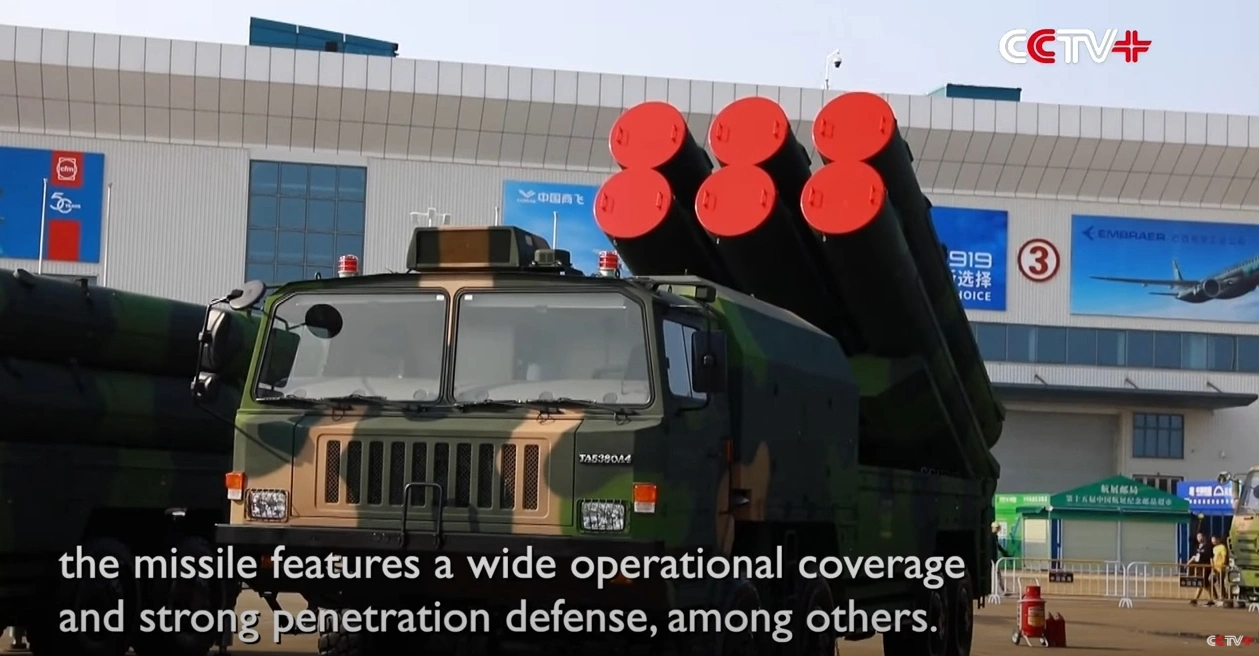
This is the HQ-19 missile defense interceptor system—rumored for years but never confirmed until now—whose unveiling has made waves worldwide. It’s also the first missile defense interceptor system (not an air defense system) that the Chinese Air Force has publicly showcased.
The HQ-19’s launch system
Let’s begin by analyzing the design and system configuration of the HQ-19 launch vehicle. The HQ-19 interceptor missile system uses a 4-axle off-road chassis, featuring a front driving cabin, a central equipment or control cabin, and a rear section equipped with two sets of six HQ-19 interceptors. The interceptor elevation mechanism employs an integrated lift system.
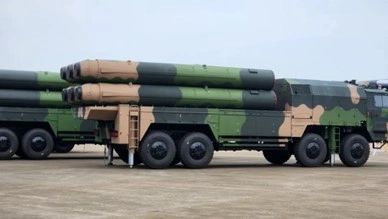
It appears that compared to the hydraulic actuator used in the HQ-9 surface-to-air missile system, the HQ-19’s integrated elevation system is considerably more robust. The interceptor launch tube has a notably large diameter, likely around 40 centimeters. This suggests that the HQ-19 interceptor itself has a similar diameter of about 40 centimeters. Additionally, there are reinforcing ribs on the sides of the launch tube, and the rear is fitted with a black rubber block, enhancing the missile’s adaptive launch capability.
Notably, after being elevated on-site, the HQ-19 does not launch vertically but at a slight angle, which is a clear difference from the vertical launch of the HQ-9B. This angled launch aligns with the features observed in the 2022 video of the “Capital Guardian Missile”.
As for why the HQ-19 doesn’t use the classic vertical launch of air defense missiles and instead launches at a slight angle, our channel’s view is that it’s due to its use of a cold-launch method. Given the high cost of this advanced equipment, if the interceptor missile fails to ignite after ejection, it’s crucial for it to fall safely to a designated area rather than back onto the launch vehicle, which could risk detonating the remaining interceptors onboard.
Additionally, compared to the HQ-9B, which is designed to counter primarily aerodynamic targets, the HQ-19 is intended to intercept ballistic missile threats, which have a more predictable attack trajectory. There is no need to counter multi-directional threats. Therefore, using an inclined launch system is more in line with the operational requirements than a vertical launch method.
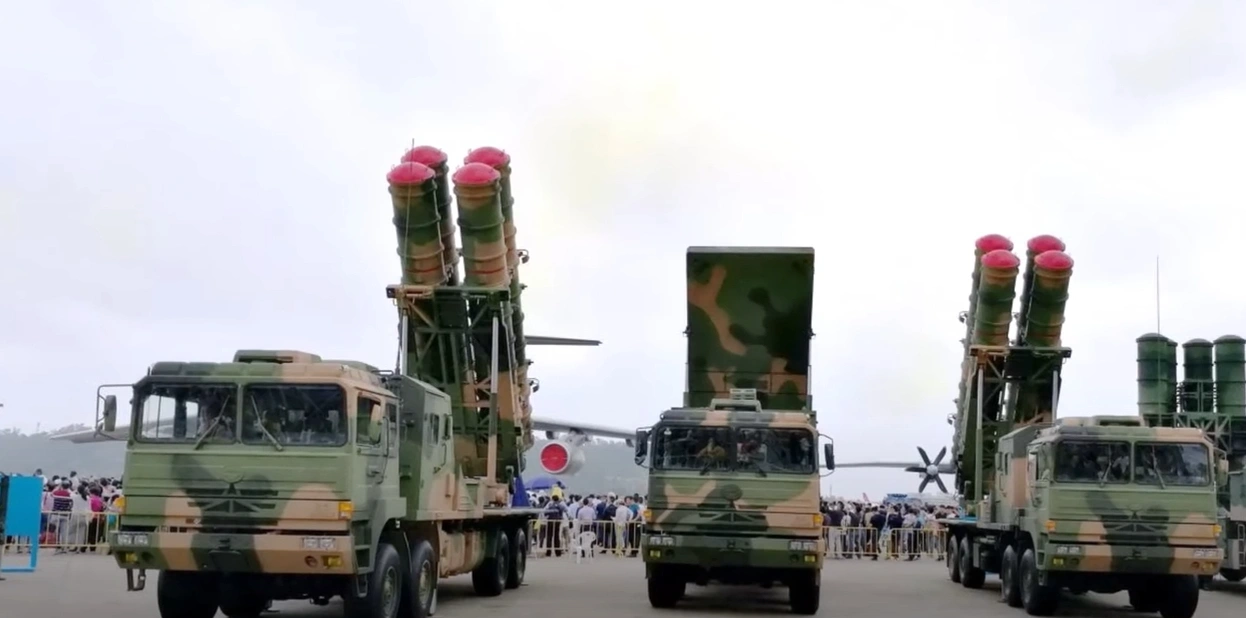
From the full system configuration of the HQ-19, the Chinese Air Force displayed two HQ-19 launch vehicles at the airshow, but the supporting command cabin, long-range warning radar, and fire control radar remain unclear. Two radar systems observed at the exhibition, the 610A warning radar and 780 fire control radar, have been identified by analysts as likely being the long-range warning radar and fire control radar for the HQ-19, respectively.
However, these two radar systems (or their earlier versions) were already showcased at the previous airshow and are not new exhibits. Furthermore, the descriptions on the display boards for these radars primarily focus on detecting aerodynamic targets, with ballistic missile targets and near-space vehicles being secondary considerations.
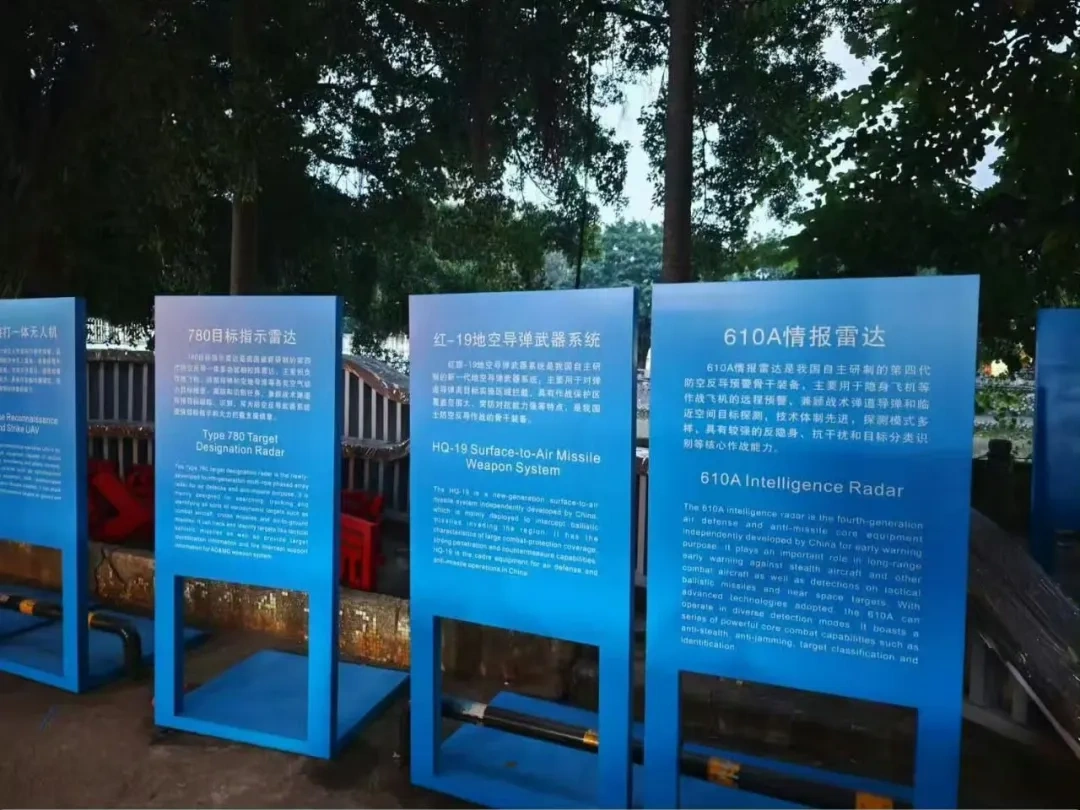
As we know, the HQ-19 is not designed to intercept aerodynamic targets, and such an expensive system would not be used for that purpose. It is a system specifically specialized for intercepting ballistic missiles and hypersonic vehicles. Therefore, the radar systems for early warning and fire control in the HQ-19’s anti-missile interception system remain a mystery.
The HQ-19’s Missile
The diameter of the HQ-19 interceptor missile appears to be similar to that of the Hongqi-9C small-diameter missile. However, the HQ-19 launch vehicle is capable of carrying six interceptors, which exceeds our expectations. Previously, we pessimistically estimated that the HQ-19 could carry only three missiles per vehicle, or at most two if we were more conservative. But now, it turns out that one vehicle can carry six.
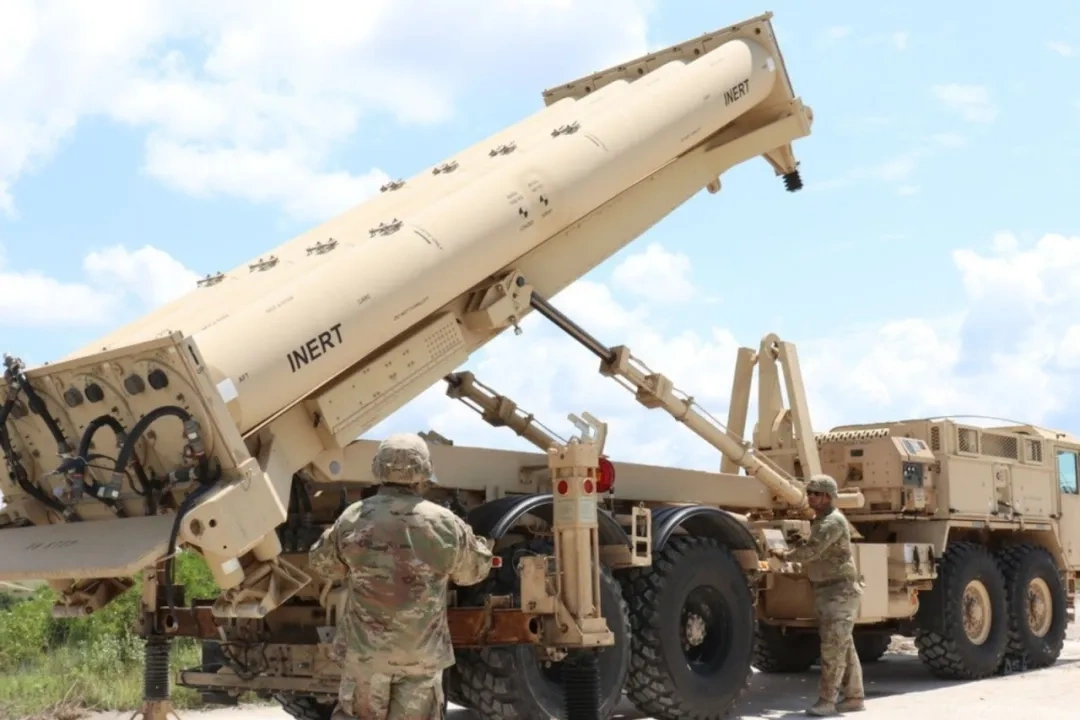 The United States’ THAAD missile defense system
The United States’ THAAD missile defense system
If THAAD-ER could truly be developed by the Americans, it would have been at this level. However, this is not that surprising.
First, the design of ballistic missile interceptors differs from that of air defense missiles. Air defense missiles need to counter aerodynamic targets, which requires stabilizing surfaces to ensure stability when flying in the lower atmosphere. However, ballistic missile interceptors do not need to consider this issue. Their operational range is not in the lower atmosphere; after launch, they quickly accelerate into near space before engaging and maneuvering. Therefore, ballistic missile interceptors often do not require tail fins, essentially saving space in the launch tube that would have been used for the installation of tail fins.
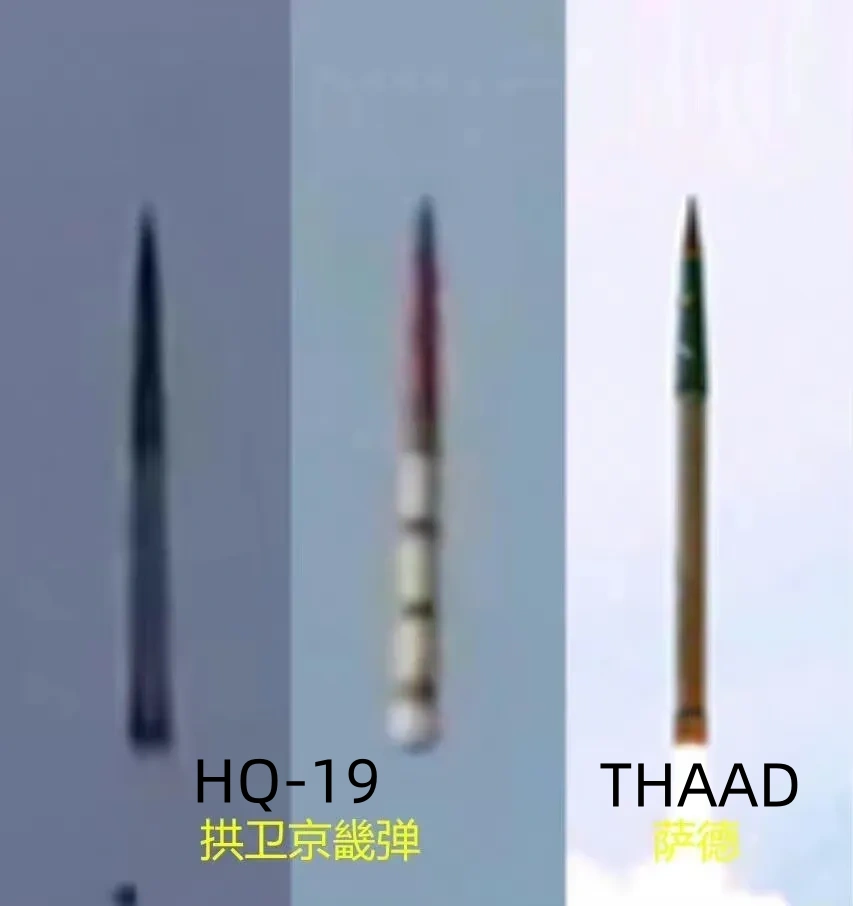 Comparison of HQ-19 and THAAD interceptor missiles
Comparison of HQ-19 and THAAD interceptor missiles
Secondly, the missile body of a ballistic missile interceptor may not actually be larger than that of an air defense missile. The warheads of the two types of missiles differ. Air defense missiles often use continuous rod warheads or high-explosive fragmentation warheads, and to ensure an effective kill radius, the warhead weight can often reach around 100 kilograms.
For example, the U.S. RIM-174 Standard-6 missile uses the MK-125 high-explosive fragmentation warhead, which weighs 125 kilograms, and the total missile weight is 1,497 kilograms. However, the Standard-3 Block 1B, which is a ballistic missile interceptor, has a launch weight of 1,501 kilograms. It uses a kinetic energy intercept warhead, which weighs only 23 kilograms. The lighter the warhead, the lighter and smaller the missile body can be designed accordingly.
At the same time, ballistic missile interceptors use more advanced materials and propellant formulations compared to regular surface-to-air missiles. For example, they can utilize carbon fiber composite wound casings and high-density, high-burn-rate N15B high-performance propellants, which help reduce the structural weight of the interceptor.
By improving the propellant’s specific impulse and using a very small warhead weight, the size of a ballistic missile interceptor is not necessarily larger than that of a conventional surface-to-air missile. The fact that the HQ-19 can carry six interceptors on one vehicle suggests that China has deep expertise in the design of both air defense missiles and ballistic missile interceptors.
The Mission of HQ-19
Since the design of the HQ-19 interceptor is highly advanced, what mission does it undertake? We can only guess based on the target missiles that the HQ-19 has previously engaged.
We all know that the interception capability of an interceptor missile depends, to some extent, on its shut-off speed. Interceptors are unlikely to intercept targets that are faster than their shut-off speed. This was clearly demonstrated during the ballistic missile attack by Iran on Israel last month.
For example, the U.S. THAAD missile defense system claims that its interceptor missile has a shut-off speed of 2800 meters per second. This shut-off speed is generally sufficient to intercept medium-range ballistic missiles with a range of up to 3,000 kilometers.
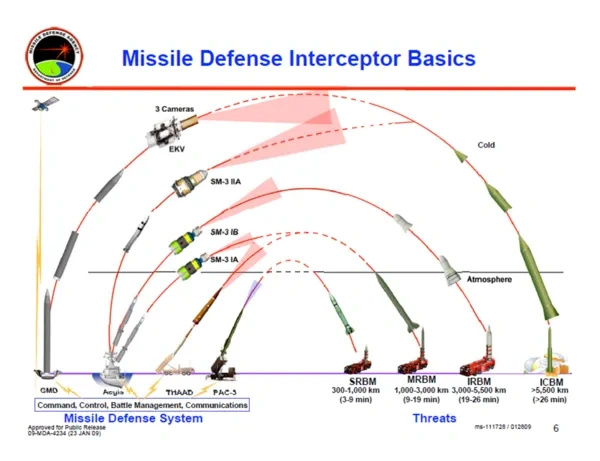 Comparison of interceptor ranges of different missile defense interceptor systems
Comparison of interceptor ranges of different missile defense interceptor systems
In contrast, the U.S. Navy’s sea-based Standard-3 Block 1B interceptor has a shut-off speed of around 3,500 meters per second, allowing it to intercept medium-range ballistic missiles with ranges exceeding 3,000 kilometers. The Standard-3 Block 2A’s shut-off speed reaches approximately 5,500 meters per second, giving it the capability to intercept intercontinental ballistic missile (ICBM) targets.
The performance of the HQ-19 is likely between that of Standard-3 Block 1B and Standard-3 Block 2A, meaning it could be equivalent to the THAAD-ER that the U.S. has only planned but not developed. It is capable of conducting end-phase high-altitude interception against ballistic missiles with a range of approximately 5,000 kilometers.
China’s future air and space defense system
Finally, let’s talk about China’s current air defense and missile defense interception system. With the appearance of the HQ-19 missile interceptor, a new piece has been added to the puzzle of China’s air and space defense strategy and tactics.
Currently, the HQ-19 is likely tasked with intercepting mid-course and terminal high-altitude missile defense. The HQ-9B and HQ-9C are tasked with intercepting aerodynamic targets as well as medium- to short-range ballistic missiles. The HQ-11, along with various anti-drone systems, electro-optical countermeasures, and others, are responsible for point defense at critical locations, countering drones, and other small targets. As for the HQ-16 and HQ-17, they belong to the ground-based air defense sequence rather than the air force combat sequence.
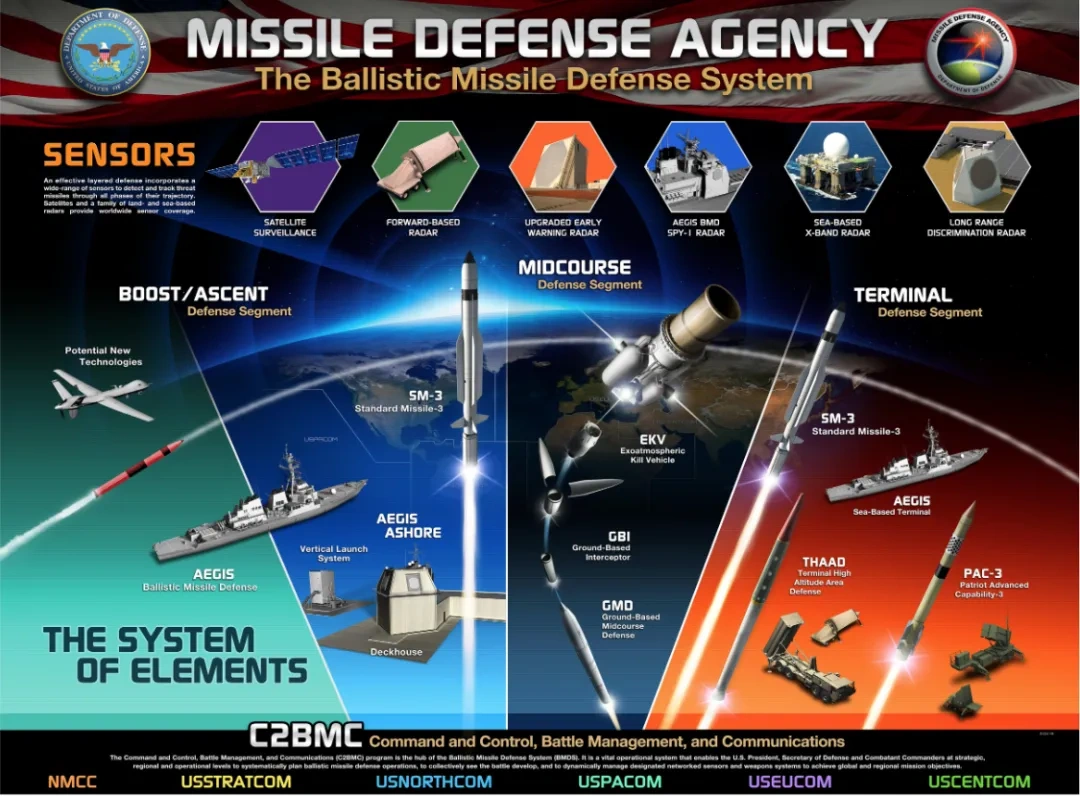 Diagram of the U.S. air and space defense system
Diagram of the U.S. air and space defense system
So, what does China’s air and missile defense system still lack? Looking at the U.S. Air and Missile Defense Forces’ equipment system, the U.S. relies on the land-based midcourse GBI, land-based high-altitude THAAD, land-based terminal-phase PAC-3 MSE, land-based terminal-phase PAC-2 GEM+, and the sea-based Standard-3 and Standard-6 series to form its missile defense interception system.
Currently, China’s HQ-9B/C is clearly more advanced than the PAC-2 GEM+, but there is still a gap when compared to the PAC-3 MSE. Therefore, it will be necessary to develop equipment similar to the PAC-3 MSE in the future. As for a product similar to the GBI, China likely has one, though it has not been made public.
What China is still lacking significantly in is the sea-based missile defense interception system. The Standard-6 is roughly equivalent to the HQ-9B, but China currently does not have a sea-based version of the Standard-3. However, from the appearance of the HQ-19, there is no problem deploying it on warships.
The only area that needs improvement is whether the 346 series radar on the Navy’s air defense ships can meet the requirements for missile defense interception combat. Is there a need for a sea-based dedicated missile defense radar, or should the land-based missile defense radar adopt a long-range engagement mode to guide the Navy’s air defense ships for cooperative or integrated combat? This may be a key focus for the development of China’s naval missile defense capabilities in the coming period.
The post China’s Anti-missile System Debuts, Crushing US Nuclear Deterrence first appeared on China Academy.
]]>